
GRANGETOWN WAR PROJECT

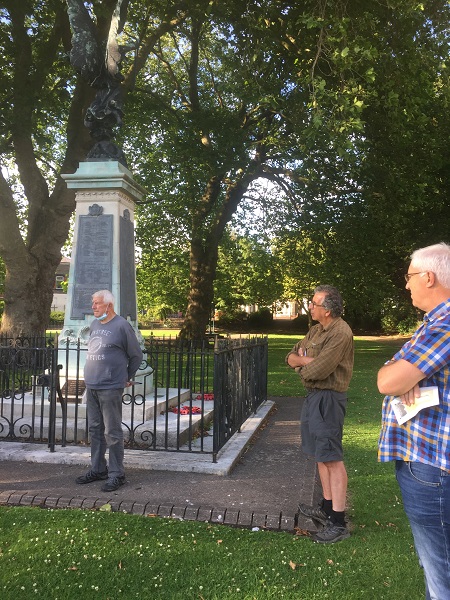
The centenary of the unveiling of the Grangetown war memorial has been marked with a ceremony.
Wednesday 7th July marked 100 years to the day that the Portland stone and bronze work was unveiled, remembering the names of more than 330 men who died in World War One.
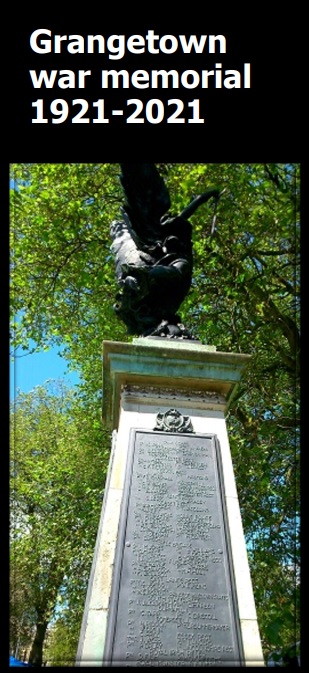 The ceremony then was attended by hundreds of relatives, local residents and dignatories and also coincided with the fifth anniversary of the Battle of Mametz Wood in the Somme, in which thousands of Welsh soldiers were killed.
The ceremony then was attended by hundreds of relatives, local residents and dignatories and also coincided with the fifth anniversary of the Battle of Mametz Wood in the Somme, in which thousands of Welsh soldiers were killed.
Grangetown Local History Society - which was involved in researching the names of the hundreds of local men who died - organised a short ceremonial event at the monument in Grange Gardens.
A pamphlet has also been produced telling the story of the memorial and there will be a display telling the story of Grangetown and World War One in Grange Pavilion afterwards.
In addition, another major piece of research work is being unveiled - the details of more than 230 local men, women and children who died in World War Two. Their names are available on an online memorial, which covers casualties from the Army, Navy, Merchant Navy and RAF, as well as local people who died in The Blitz.
A simple plaque remembers those who died in World War Two but there was no room for any names on the 1921 memorial. The online WW2 memorial, accompanies the existing and updated online WW1 memorial - which was launched at the start of the Society's four year Grangetown at War project in 2014.
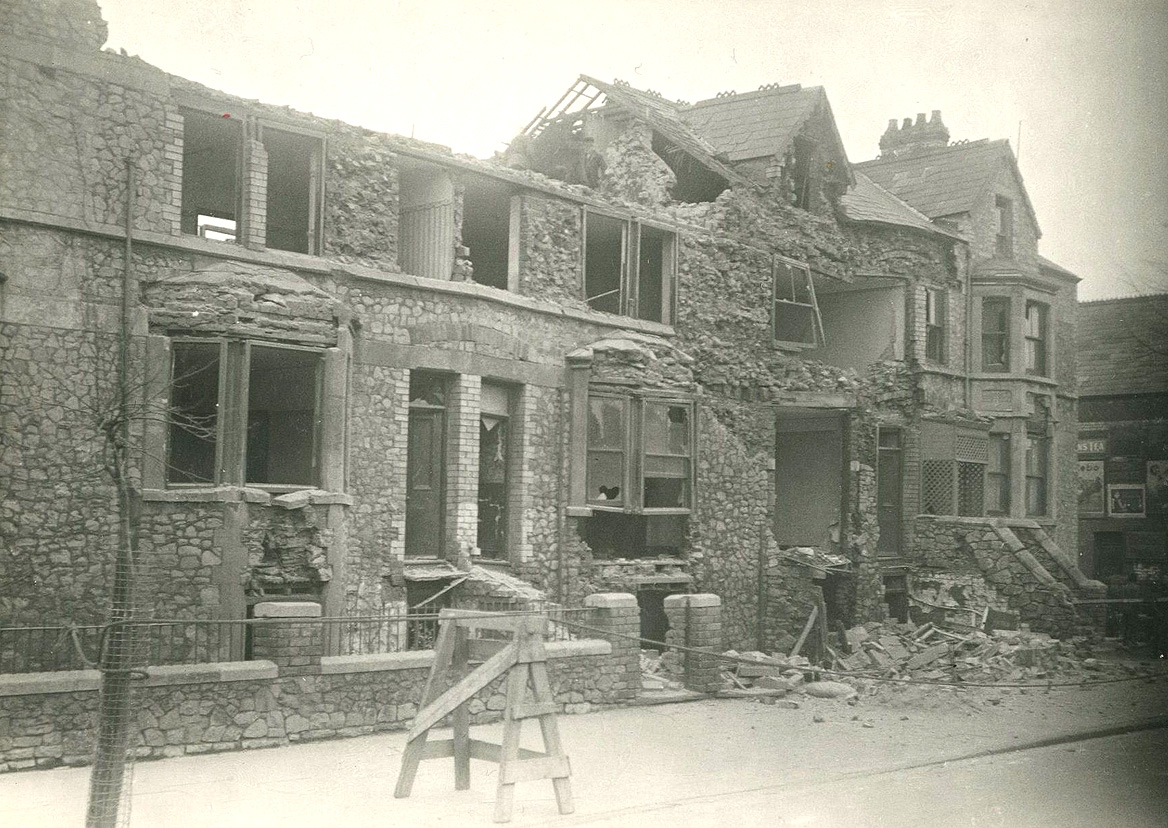
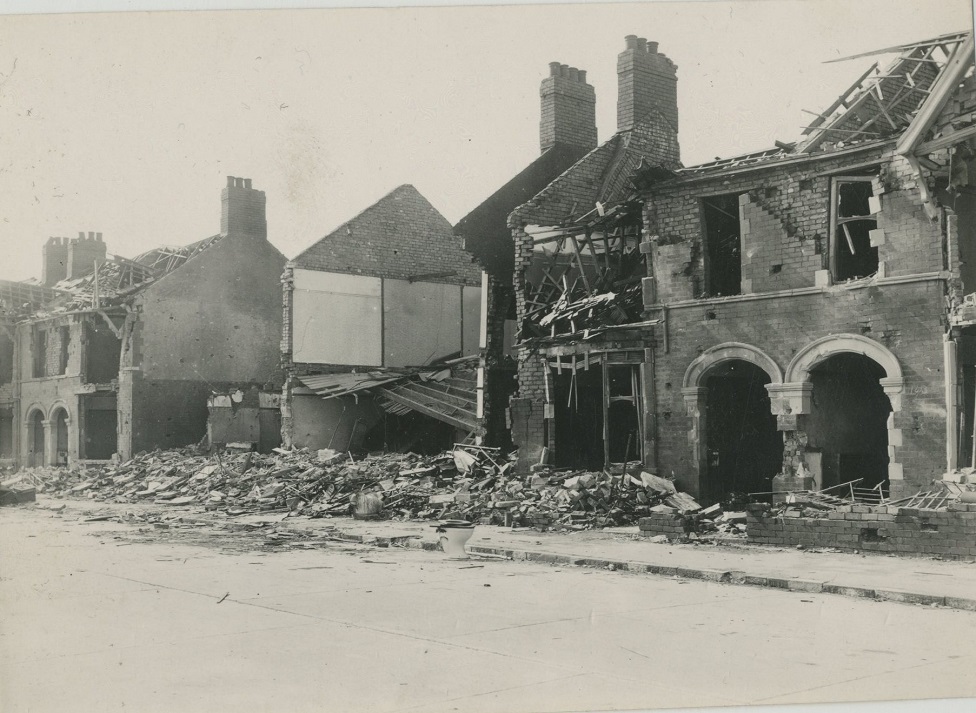
Three artists and a group of young Grangetown people marked the 80th anniversary of the Cardiff Blitz online with the The Night-time Blitz Experience.
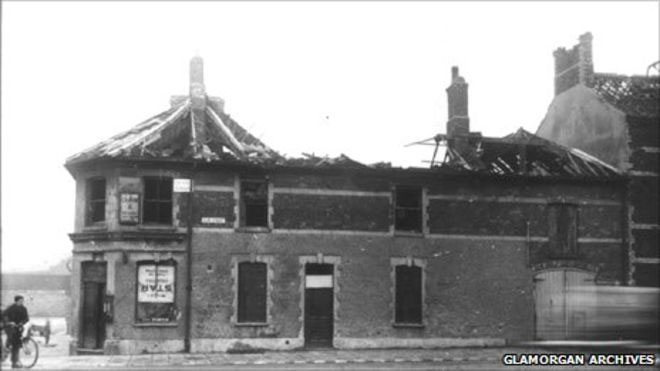
Bomb damage on the corner of Clive Street - corner of Ferry Road
The project, backed by Heritage Lottery funding, explored the impact of the Blitz on Grangetown, a neighbourhood particularly hit by the World War Two bombing.
Due to Covid-19 lockdown restrictions, the work was being shared online on the anniversary of the worst night of the Blitz - including a "real time" feed of events on the evening and in the hours leading up to it.
You can still catch-up on the work onthe Blitz Experience webpage Also follow @BlitzCardiff on Twitter
Eighty years ago, on Thursday 2nd January 1940 at just after 6.30pm the Blitz hit Grangetown. These were dramatic and life-changing events for many people – 165 people across Cardiff were killed and 6,000 made homeless in one night. Artists Alec Stevens, Jason and Becky, Secondson and a group of 11 local young people worked through a research-based process, supported by material provided by Grangetown Local History Society and the Glamorgan Archives, to make work that responds to some of the people and places affected by the Bliz in Grangetown. The Night-time Blitz Experience was due to be a live in-situ event at the Grangetown sites that were bombed 80 years prior, it was outside and social distancing measures had been put in place, however due to covid regulations we are now migrating online. A book Cardiff and the Blitz, written by Steve Duffy, will be published in 2021, which will tell the story of nearly three years of bombing, with accounts and personal memories, many not shared before. Some of the this research was used as material for the artists to work from.The artists involved are:
Jason and Becky: Swansea-based collaborative artists who work in audio-visuals and installations, as well as engaging with local people, and who presented their live performance on a stream. As The Sky Darkens was inspired by the impact of the Blitz on Clydach Street, including a boy who traded comics with a young neighbour and victim of the boming.Alec Stevens: A Bristol-based fine artist and sculptor who telks the story of Hollyman's bakery, involving the stories of different individuals around the tragedy, which left some of the victims unidentified. There was a Zine which can be downloaded at the website. Copies were also given away to local residents at the site of the bakery, along with barra brith. There is also a short video 22 Unknown inspired by the unidentified victims of the tragedy.

Secondson playing the halldorophone at the Temple of Peace. Photo: Tessa Salt.
A group of young people, aged 16 to 25, was set up to work with artists on the project to produce a creative interpretation of the story of the Blitz at Ferry Road. There is a video of their artwork and projection based on the story of people who lived and survived, side by side. You can read more on the Artshell website. Despite the huge logistical challenges, we'd like to thank all the artists for producing such thought-provoking work, which was followed by a large number on the evening. Unexploded bomb tragedy story uncovered The story of a war-time bomb explosion in a suburb north of Birmingham, which killed 13 people, has been uncovered, 80 years on, during research on a young soldier from Grangetown.Seven men with a Royal Engineers bomb disposal unit were killed when three bombs exploded at the back of a house in Sutton Coldfield near Birmingham, on the afternoon Sunday 25th August 1940. Five of them were from south Wales. Six local civilians also died when the delayed-action devices detonated. Due to wartime censorship, few details of the event were published – with only a mention of the deaths of the seven Royal Engineers, but not what had happened or where. The incident happened at the back of 117 Welwyndale Road in Sutton Coldfield – part of a number of recently-built houses, on the edge of the Birmingham district of Erdington. The soldiers were digging down to the bombs when they heard a fizzing sound, which one water board official attributed to a burst main. But the bombs exploded. Records indicate that a 45-strong unit, led by a Lt Campbell, had been sent to Birmingham a month before to deal with the aftermath of air raids. Problems included delayed action bombs, which were designed to explode up to 80 hours after landing. There had been an air raid on Birmingham on the night of Saturday 24th and the Birmingham Mail reported on the Monday that there had been “delayed action bombs over a wide area.”
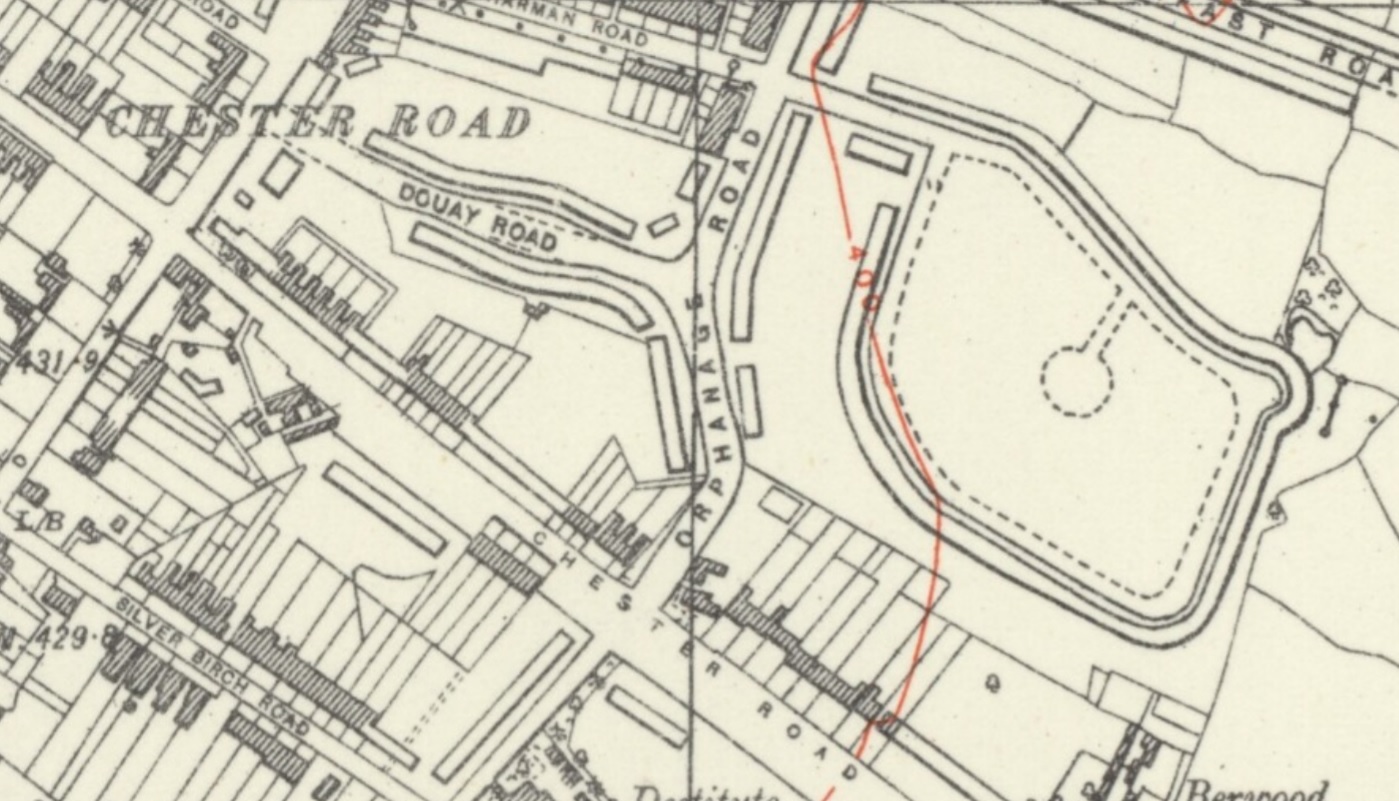
 On the 25th, the bomb disposal unit war diary reads: “Explosion of three bombs during removal killed seven other ranks, one died in hospital subsequently. Four were injured. All the casualties were from No 68 section.”
Who were the seven men who died?
William Fergusson, 19, from Penarth Rd, Grangetown, Cardiff was a driver. His elder brother Thomas would die three years later serving in Italy in a battle with the German Tenth Army.
On the 25th, the bomb disposal unit war diary reads: “Explosion of three bombs during removal killed seven other ranks, one died in hospital subsequently. Four were injured. All the casualties were from No 68 section.”
Who were the seven men who died?
William Fergusson, 19, from Penarth Rd, Grangetown, Cardiff was a driver. His elder brother Thomas would die three years later serving in Italy in a battle with the German Tenth Army.
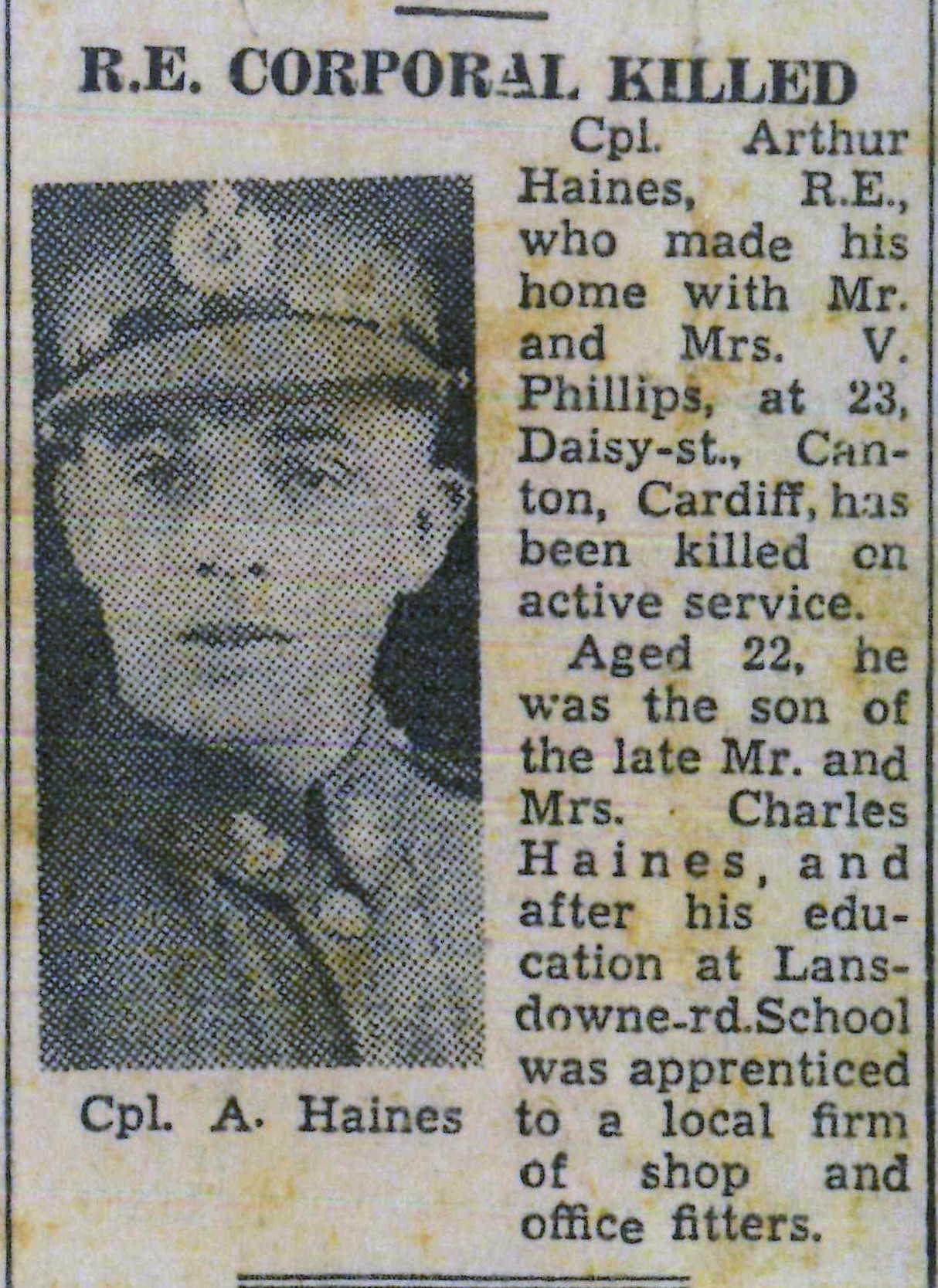
Cpl Arthur Haines, 22, of System St, Adamsdown in the city - was the youngest child of the late Charles and May Haines; his parents had died by the mid 1920s and he lived with a family in Daisy Street, Canton, while going to Lansdowne Road School. Arthur, a carpenter with a shop fitting firm, had already volunteered with the Royal Engineers in the territorials in the spring of 1939 and was promoted to corporal at the start of the war.
William Henry Thorne, 27, of Dogfield Street, Cathays, Cardiff. He left a year-old son and a pregnant widow Winifred. William Ward Davies, 20,was the second son of dairy farmer John William Davies and mother Agnes Hamilton Davies, of Kincoed Farm, Oakdale. He died in hospital the same day and was buried in a churchyard back at home. Mervyn Tasse Andrews, 20, was the son of Frederick W. Andrews and Jane Andrews, of Clydach near Abergavenny. His father, 76, a retired quarryman had also served as a sapper in the Royal Engineers during World War One. Norman Cryer, 37, of Barnoldswick, Lancs, left a widow, a son and three daughters, of Green End Road, Earby. He was a weaver before the war.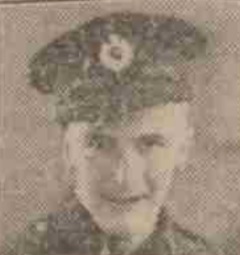 Arthur Rabinowitz, 21, also known as Knight, of 67 Wavertree Vale, Liverpool. His obituary said he was very popular in Livepool amateur dancing circles.
The civilians who died were: ARP warden Tom Hatton, 59. He lived at 86 Berwood Farm Road, having formerly lived in Aston and Arthur Road, Erdington. He was the husband of Providence Martha Hatton and father of seven children.
His nephew was with him and also died. Albert Hemming, 24, was with the Home Guard.
Albert Montague Bird, 61, a shopkeeper from Southend-on-Sea, who seemed to have retired and moved to nearby 78 Berwood Farm Road, another new house, with his wife Julia.
Thomas Blake, 49, lived at 76 Welwyndale Road, Erdington. Husband of C. Blake.
Another Home Guard man was Leslie Arthur Maddox, 31, who was also a St John’s volunteer. He lived at 72 Berwood Farm Road and was a cash register mechanic. He left a widow Mary Elizabeth – they had been married nearly five years – and two young daughters. He was the son of Ada E. and George Maddox, of 27 Upper Thomas Street, Aston. His father, a firewatcher, would die in an air raid at this home on 30 July 1942.
The youngest civilian to die was John Squires, 19, a bank clerk and only son of John Walter James, bank manager, and Maud Mary Squires, of 843 Chester Road, Erdington.
Arthur Rabinowitz, 21, also known as Knight, of 67 Wavertree Vale, Liverpool. His obituary said he was very popular in Livepool amateur dancing circles.
The civilians who died were: ARP warden Tom Hatton, 59. He lived at 86 Berwood Farm Road, having formerly lived in Aston and Arthur Road, Erdington. He was the husband of Providence Martha Hatton and father of seven children.
His nephew was with him and also died. Albert Hemming, 24, was with the Home Guard.
Albert Montague Bird, 61, a shopkeeper from Southend-on-Sea, who seemed to have retired and moved to nearby 78 Berwood Farm Road, another new house, with his wife Julia.
Thomas Blake, 49, lived at 76 Welwyndale Road, Erdington. Husband of C. Blake.
Another Home Guard man was Leslie Arthur Maddox, 31, who was also a St John’s volunteer. He lived at 72 Berwood Farm Road and was a cash register mechanic. He left a widow Mary Elizabeth – they had been married nearly five years – and two young daughters. He was the son of Ada E. and George Maddox, of 27 Upper Thomas Street, Aston. His father, a firewatcher, would die in an air raid at this home on 30 July 1942.
The youngest civilian to die was John Squires, 19, a bank clerk and only son of John Walter James, bank manager, and Maud Mary Squires, of 843 Chester Road, Erdington.Thanks to Ted Richards of Roath History Society. Details have been passed to Sutton Coldfield History Society, although they were unaware of the tragedy before. The last seaman's name added to war memorial Details of another casualty on the Grangetown war memorial have been discovered - in time for the centenary of his death.
"W J O'Leary" on HMS Vivid had been the only clue but his details did not match any World War One casualty records, which were available.
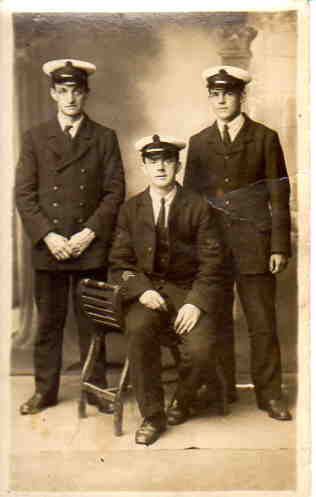
But his inclusion was thanks to his sister Sarah's brother being on the memorial's organising committee.
William Jonathan Leary was born on 16th January 1886, son of Thomas and Ellen Leary, of 45 Amherst Street, and he lived at 6 Newport Street.
Reports say the rope came loose and recoiled, hurting him and throwing him overboard. He was seen to be bleeding heavily in the sea. His body was never recovered.
One newspaper recorded: "A lifebelt was thrown to him, but all efforts to rescue the poor fellow were unavailing. Leary had obviously been seriously injured by the breaking of the rope, as he was noted in the water to be bleeding considerably." His brother-in-law was Fred Cornish, vice chairman of the memorial committee, and although not officially a war casualty, his name was the last to be added to the memorial ahead of its unveiling a year later.Thanks to Cheryl Everall Young RAF hero whose luck ran out
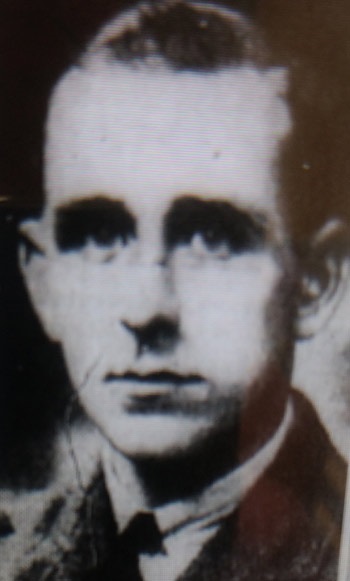 Thomas Gosling was one of the early RAF losses, who went missing only days after an heroic return following his aircraft suffering serious damage during a mission over occupied Norway.
Thomas Gosling was one of the early RAF losses, who went missing only days after an heroic return following his aircraft suffering serious damage during a mission over occupied Norway.
Only days before Flight Sergeant Gosling returned from a reconnaisance mission over occupied Norway, which saw him return safely on one engine for 350 miles after his plane was shot at and badly damaged.
He was one of four young aircraftmen from 224 Squadron - often involved in anti-submarine missions from RAF Leuchars in Scotland - who went missing that day. Thomas was a former pupil at Canton Secondary School, who won a scholarship, and joined the RAF as a teenager.
We are marking the 80th anniversary of the deaths of World War Two casualties from Grangetown.
Chief stoker Bertie Stevens, 40, died on April 10th 1940 when his ship, HMS Hunter, was attacked by German destroyers off Norway.
He had been born on 23rd February 1900, son of William Stevens, a tugboat captain, and Sarah, of 33 Kent Street and later Amherst Street. One of nine children, he married Jessie Maud Richards and they lived in Pantbach Avenue.
Bertie had served in the last war as a stoker from July 1918 and was a fireman on a tug before World War Two.
His ship was involved in the Battle of Narvik, off Norway, and 107 men of the crew were killed and another five died of their wounds when the Hunter was attacked by German destroyers. Another 46 men were rescued.
It would be two weeks before the story of the battle was told, described in the South Wales Echo as an "epic of British naval history," as five ships - including the Hunter - attacked stronger German forces in Ofot fjord.
Snow was falling heavily as the ships entered the channel at 3am. HMS Hardy lead the attack and was "hotly engaged" and eventually was hit. Hunter was sunk but the battle saw one German destroyer and six supply ships sunk and three other destroyers badly damaged.
Bertie's death was reported in the Echo on April 23rd. His widow remarried a widowed neighbour in 1946 and died in 1977.
Stories appeal for World War Two project
Following the success of our World War One centenary project, the society is busy researching for a project to mark the 80th anniversary of World War Two in Grangetown and the Cardiff Blitz.
The first part of the project, Cardiff and the Blitz is in 2020 and the start of 2021 to mark the anniversary of the worst air raid in January 1941.
It will have a special focus on Grangetown and the experiences of its civilian population, but also feature events which happened in Riverside, the Docks and another areas of the city. It will culminate in a book and a commemoration event. There will also be engagement opportunities with schools, young people and drop-in events - ahead of a commemoration event on 2nd January 2021 around some of the sites where the Blitz happened.
The second part of the project in 2021, Grangetown and the War will draw on stories of experiences of those who served, as well as people living at home.
It will also for the first time create a roll of honour for those WW2 casualties from Grangetown. So far we have researched more than 280.
As well as researching war casualties, the society also wants to tell stories of civilian experiences - from rationing, evacuation, life at school and in factories, as well as the Home Guard.
We are collating memories we have already gathered with local people - but want to record more memories and details of family members who served in different capacities in the war.
A second book will be published later in 2021, including a memorial section - a companion to the book published in 2018 about Grangetown and World War One. We have already been gathering stories - in addition to many collected over recent years. But we would still like to hear from more people - even with only fragments of information or experiences.
Huge thanks to @SteveDuffy99 for taking time out to talk to Yr6 about his research on his forthcoming book on the Cardiff Blitz. pic.twitter.com/f1wGpdZrfc
We are already starting to link up with schools and would be interested in hearing from other groups in 2020.
We would be particularly interested in hearing from people with family stories of being a prisoner of war, women in work, or experiences of the Blitz.
Anyone who has any family stories or casualty details or knows someone from Grangetown who remembers the war, please get in touch on grangetownwar@yahoo.co.uk or come along to our monthly meeting.
We are marking the centenary
of the deaths all 480 men and women from Grangetown who died on active service, day by day until 1921.
We are including biographical details here and also Tweeting the names via
@GrangetownWWI. If you know of an ancestor whose anniversary is coming up and
you have additional details or photos, please email us on grangetownwar@yahoo.co.uk.
There is a full list of those who served and died here. Centenary of race riot in the aftermath of the Great War - with Grangetown links
Two Grangetown men were killed during race rioting in June 1919 in the aftermath of World War One, while another unsavoury incident saw a mob descend on the Grangetown home of a black seaman.
Bertie Hale Stevens, 1900-1940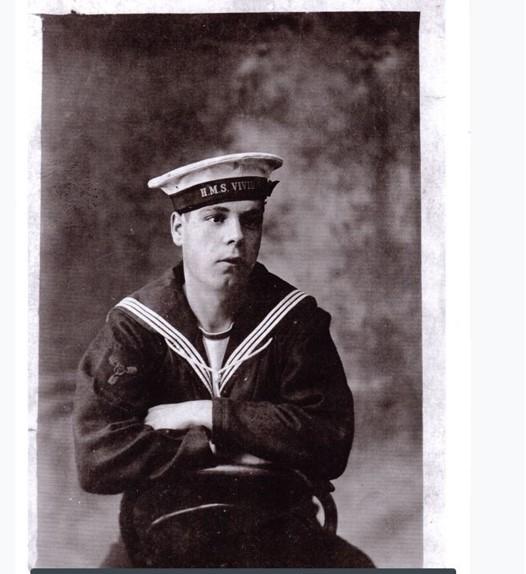
 Click on the banner above or here to see
the online WW1 memorial
Click on the banner above or here to see
the online WW1 memorial

There was simmering anger with former soldiers struggling to find work. As well as Cardiff, a man was killed in Barry - another port - and there were also disturbances in Newport. One report said the Cardiff incident was sparked by a group of soldiers who saw a black man in the company of a white girl.
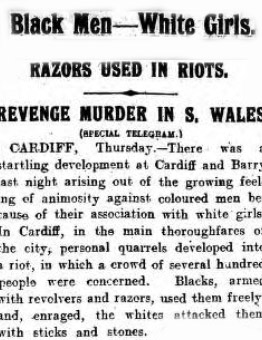 Harold Smart, 20, a shoeing smith, lived at 19 Monmouth Street with his father Frederick. He had left home at 5.40pm on the evening of June 11th. At around 10.30pm, he had his throat cut by a razor by the Hayes, near the end of Caroline Street. He died later at King Edward VII hospital. According to the account in the Western Mail, he came towards a policeman with his hands around his throat and said "a n***** has cut my throat," before being taken to hospital by taxi. A witness had spoken about a black man and a young white man "arguing the toss."
Harold Smart, 20, a shoeing smith, lived at 19 Monmouth Street with his father Frederick. He had left home at 5.40pm on the evening of June 11th. At around 10.30pm, he had his throat cut by a razor by the Hayes, near the end of Caroline Street. He died later at King Edward VII hospital. According to the account in the Western Mail, he came towards a policeman with his hands around his throat and said "a n***** has cut my throat," before being taken to hospital by taxi. A witness had spoken about a black man and a young white man "arguing the toss."
The paper's reporting of the inquest - with today's eyes - is quite shocking for its casual use of racist terms. "Five or 10 seconds after the witness saw the n***** turn round and he seemed to strike the white man across the face. As his hand came away, the witness noticed it contained a razor. The witness immediately rushed at the black man, called him a 'dirty black ---' and struck him on the side of the face."
Smart's attacker managed to escape along Caroline Street.
The following evening, John Donovan, 33, from Thomas Street, was shot through the heart and lung inside a boarding house in Millicent Street.
A worker with the Taff Railway, he was a former solider and a veteran of the Battle of Mons with five years military service, who had been leaving for work on Wednesday evening but instead got caught up in the trouble. Altogether around 15 shots were fired inside the house, with an angry mob outside. Nine men were held by police and the inquest jury returned a murder verdict.
Another incident involved an attack on the home of merchant seaman James Headley and his family in north Grangetown on June 12th.
The story was given a scant mention in the South Wales Echo of the day, as "a mob
of 1,000 men attacked the homes of two negroes." But it is re-told at length by Headley's grandson, the late Butetown historian Neil Sinclair in The Tiger Bay Story and also in a BBC Wales programme The Forgotten Warriors of World War One
The rioting, which included attacks in streets off The Hayes and led to black men of Tiger Bay forming a protective cordon at the top end of Bute Street, was the subject of a 2018 play by National Theatre Wales in 2018 and will be perpeffor as Wild Scenes at Cardiff at Butetown Community Centre on June 12th-13th, the 100th anniversary.
The Saltmead story centres around Somerset Street, at a house rented by Barbados-born James, who had arrived in Cardiff as a cabin boy and who married Agnes Jolly, a white Lancashire girl who had ended up in Tiger Bay. The couple had a daughter Beatrice and moved to lodgings at No 27.
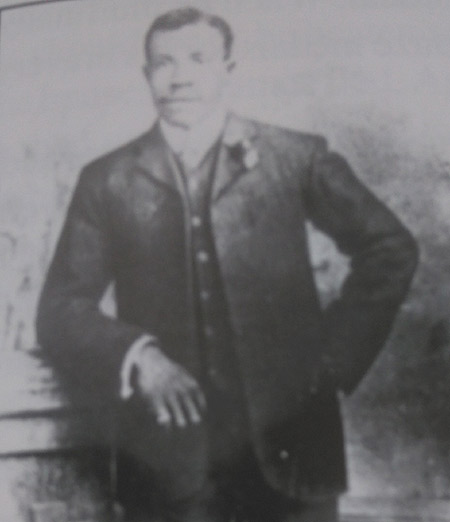

James's ship had survived torpedo attacks in the war and he was taken prisoner, earning medals. But it was one summer evening in 1919 that neighbours alerted them to a mob of rioters on their way, and they soon arrived carrying torches. James escaped over the back wall, while Agnes and nine-year-old Beatrice fled upstairs.
Sinclair wrote: "Disappointed at not finding him, they began to ransack and destroy the home. Agnes was attacked and struck to the ground while the rioters poured paraffin over the living room table, about to set fire to the house."
They stopped after learning the property belonged to a landlord not the Headleys; the police only turned up the next day and were said to have blamed Agnes for marrying a black man! The landlord later demanded they leave or he would evict them. The family moved to Tiger Bay.
New book tells story of Grangetown casualties
Five years of research into the men and women from Grangetown who died in World War One has been published in a book, to mark the end of the centenary of the conflict.
It Touched Every Street tells the stories of soldiers and sailors from the Cardiff suburb who were killed - and the project also found another 156 men and women who were not included on the original war memorial in Grange Gardens.
The stories include the first Welshman to be killed in World War One, within hours of the declaration of war; the first member of the Cardiff 'Pals' regiment to die, as well as the Grangetown men caught up in the major battles of the Somme, at Ypres and in the North Sea at Jutland. It was launched in November 2018.
The 200-page book, which includes stories and memories contributed by families, was written by Grangetown Local History Society member and local journalist Steve Duffy.
He uncovered the stories of three women who died in different circumstances directly because of the War, and also tells the story of the only Cardiff City footballer to be killed - just two days before the end of the War.
"It started off as a project to research 330 names on the war memorial but soon it became apparent that there were many other local casualties not recorded - and this in itself was an unexpected twist," said Steve. "Apart from a few mysteries which may never be solved, we now have a pretty good idea about who all the casualties were - where they lived, their families and something about their lives before they went off to war. No Grangetown street was untouched and it's worth reflecting this would have been replicated in many streets across the country."
Since the publication of the book and the postcard project, three more casualties have emerged - thanks to family getting in touch - and these have been added to the online memorial and will be included in any subsequent editions of the book.
It Touched Every Street costs £ 14.99 and is available from the society, direct from Wordcatcher Publishing, online orders add postage. or via Amazon Email grangetownwar@yahoo.co.uk. If you live locally, it may be possible to arrange for you to collect the book or for a delivery. A sister publication In Proud And Honoured Memory about the Whitchurch war memorial, by Ceri Stennett and Gwyn Prescott, was published at the same time.
Special postcards marked the house of each Grangetown soldier and sailor who died in World War One.
More than 400 postcards were distributed to last known addresses of those who died - with current householders asked to place them in their windows, as a sign of remembrance in time for the 100th anniversary of the Armistice.
Grangetown Local History Society have researched the details of most of the 330 men on the war memorial in Grange Gardens, as well as more than 150 men and women who were omitted when it was erected in 1921.
Letters were included with the postcards to explain the idea behind the project. Each postcard included the name, regiment or ship and date of death of the casualty. And people can find out more about the casualty by looking on this website.
Thanks to members of the society for helping both collate and deliver the cards, which were kindly printed by Allens of Leckwith.
Some streets no longer exist or have no homes on them any more, so the nearest chapel, church or school will be asked to display the cards. There are a small number of casualties for which we either have no details or no address is known.
The project really caught the imagination of residents - and we had some very touching responses from those living in the former homes of soliders and sailors. Families also reacted very positively and there were cases of descendants visiting streets to take a look.
Meanwhile, postcards of the Grangetown "poppy map" - showing all the homes were casualties lived before the War - have also been produced.
Media coverage of our World War One project
There was tremendous coverage of the latter stage of our World War One commemoration - especially the postcard project.
ITV Wales ran a lovely report, talking to residents, pupils at Ninian Park Primary School - during a visit by Grangetown Local History Society, as well as society member Michelle Darby Charles. Watch the video above and read more here
The BBC Wales news website has also featured the project, talking to residents and the history society.
The Western Mail and South Wales Echo both ran double page features on the It Touched Every Street book and our poppy map on Saturday. The story was also reproduced on Wales Online on Remembrance Sunday and on Monday in the Daily Mirror online.
There was also another terrific video item with residents and businesses talking about their postcards, produced by the Wales Online team.
Plaque remembers 150 'forgotten' war dead
More than 150 men and women from Grangetown have been honoured 100 years after they lost their lives during World War One.
Five years of research carried out by the Grangetown Local History Society discovered that the names of many people from the area who died were not included on the war memorial when it was first erected in July 1921.
The anomalies were found during research for the details of the 330 soldiers and sailors who were listed alongside their regiments or ships on the original monument in Grange Gardens.
Many details of the casualties - where they lived and worked were discovered - but then other names came to light involving dozens more who for various reasons had been missed.
Now a plaque and plinth have been added to the base of the memorial, in time for the centenary of the end of the war.
"It began with finding around 30 new names initially but it was surprising to uncover many more," said Steve Duffy, who has been researching the names for Grangetown Local History Society's World War One project.
"Some were long established families in the area with strong connections, so there is no straightforward reason why they might have been missed off. There were also three women who died directly as a result of the war in very different circumstances. We have built up an online record but it's really fitting now that their contributions are not forgotten and are remembered with the many others."
Cardiff Council in partnership with Mossfords Ltd, have now added a bronze plaque in memory of those whose "names are not recorded here" to the Grade II listed memorial. The plaque says "more than 140" and the number currently stands at 152.
Cabinet member with responsibility for bereavemen services, Councillor Michael Michael, said: "The sacrifices made by those who fought and died on our behalf should never be forgotten. This plaque ensures that, in this important centenary year, every Grangetown resident who lost their life in the service of our country is honoured in the place they called home."
The original memorial was erected using £1,000 raised by voluntary subscription by the "Grangetown War Heroes Memorial Committee" and was designed by Henry Charles Fehr (1867-1940) who also designed the dragon on City Hall. It was officially opened in front of large crowds on the fifth anniversary of the Battle of the Somme.
Recent project work
Stories of Grangetown men who
fought and died Here are just some examples
of the stories we will tell - the lives behind the names on the memorial:
DIED
AT SEA The stories of Elmer Darrock who ended up being buried in
the United States and John Cleal, who postponed his wedding to fight in
a Naval battle.
HONOURED
BY THE FRENCH Diaries of life in the trenches help remember John
Henry Withers, who was killed shortly after he married.
THE SCHOOLBOY RUGBY STAR WHO FELL AT YPRES A few years after he played as a teenager for Wales George Harben died in Flanders. But his family suffered a second tragedy, which is not recorded on any memorial.
A WIDOW
FOR 50 YEARS Soldier John Melean died after the end of
the War but just before his wife reached hospital.
'COURAGE
BORDERING ON RECKLESSNESS' The story of Lord Ninian Edward Crichton
Stuart, local MP amd the highest ranking officer on the memorial who was
killed rallying his men.
BLOODY DAYS OF JULY 1916 A look at some of the men who died at the start of the Battle of the Somme in July 1916.
DIED IN THE SECOND BATTLE OF
THE SOMME The family of Pte Tom Goodland, who died at Mametz
Wood two months before the end of the war, have been left some evocative photos
of him - and his medals.
ONE OF
MANY CASUALTIES ON A TROOP SHIP Henry James died in 1917 on his
way to fight in Salonika when his ship was sunk by a U-boat.
WALES
RUGBY INTERNATIONAL The story of Dai Westacott, who played for
Wales and Cardiff but was later injured in the Somme and killed at Ypres.
THE SOLDIER WHOSE NAME WAS ADDED TO THE MEMORIAL 83 YEARS LATER The story of Pte Bill Laugharne, whose body was found nine years after his death - and was missed off the memorial.
THE FIRST WELSHMAN TO DIE IN THE WAR The story of William Welton, the 19-year-old from Grangetown who became the first casualty, only 32 hours into the war on August 6th 1914.
THE SOLDIER ON MEMORIAL WHO LIVED TO TELL TALE The remarkable story of Sgt Alf Norman who survived the war but whose name ended up on the memorial.
POVERTY NOT PATRIOTISM L/Cpl Horace
Maynard, who died at the Somme, but joined up to help keep his widowed mother
from the workhouse.
DIED AT PASSCHENDAELE The story of Pte Frederick Clargo, the butcher's son.
CARDIFF PAL AND LIGHTHOUSE VESSEL TRAGEDY The story of L/Cpl Alf Johnson, 24, the first reported casualty
among the "Cardiff Pals" battalion. And Capt Hugh Leopold Phillips, who
left a widow in Grangetown when his lighthouse vessel was sunk by a mine.
LIVES IN BRIEF The boys who died on
the ships + One of three sisters who served in France + The docksman who left
a young daughter.
SURVIVORS' STORIES Some of the Grangetown men who came home but for some, life was short or never the same again.
MY GREAT-GRANDFATHER - AND HOW TO RESEARCH AN
ANCESTOR The story of Pte Ivor Darby, and a few tips on how to
go about finding details of your ancestor's war service.
WHY WE BUILT A TRENCH Fitzalan High School explain how they commemorated the war by building a replica trench in the school grounds.
The Grangetown streets where
they mourned the men who didn't come home
Very few streets escaped the
effect of the war. We've reproduced a contemporary map here - thanks to Glamorgan
Archives - and plotted where those who died were from in Grangetown. There are
others too, not included, for which we have no exact address. Click on image or here for a larger map. You can also look
at the list of streets here.
Names on the memorial
needing more research
We're particularly interested
in tracking down details of the following men on the memorial, including
those with Grangetown connections which are uncertain. Some details on
the memorial so far have proved inaccurate, so we'd like to hear from
anyone who can help us:
CALLAN, Thomas On St Patrick's RC Church plaque, no details traced We believe details of some of the above may be wrong. But if you have any details or suggestions for the above, please get in touch with
the society by emailing grangetownwar@yahoo.co.uk.
The memorial's history
What of the organisation? No minutes of the committee survive but there is a mention in a report of the council's park committee of September 11th 1919 of plans to present a "handsome memorial," at a cost of £1,000, including a "beautiful design figure of peace". The report also mentions that it would record the names of between 400 and 500 men of Grangetown "who lost their lives in the country's service". With only 330 ultimately included (our project uncovered around 485), it makes the process of recording them even more puzzling. It was common for people to submit names in writing, as with the Lord Mayor's civic memorial, while there would have been inevitable reliance on word of mouth. We believe families may have been asked for a contribution. Apart from the known omissions, transcription errors, duplication and one erroneous inclusion of a soldier who survived, we also know of at least one mother who had contributed to the fund, whose son was not included.
The name of another soldier Pte William Laugharne, 23, was added on a plaque
in 2000. His body was not found until nine years after his death in October
1917 and too late to be included on the original memorial. A plaque was also added by Grangetown Local History Society to remember those who died in World War Two.
There are 58 members of the Royal Navy, Royal Naval Reserve and merchant navy on the memorial - the youngest just 15.
Names include the local MP and landowner, Lord Ninian Crichton-Stuart, and
also a Wales rugby international.
Remembering the 30 Grangetown men who died at Ypres
The Somme is the name that resonates when people think of World War One, especially in Wales, but the third battle of Ypres a century ago had just as big an impact in a place like Grangetown.
Altogether, 30 men from the community died in Flanders over a three month period ending at Passchendaele in November 1917.
The series of major offensives, mostly beginning at dawn, on the German trenches in Belgium were notorious for the conditions men fought in.
They were characterised by unprecedented artillery bombardment and shellfire, of ground swamped in mud and of huge water-filled craters left by both sides’ heavy gun batteries.
The men who died from Grangetown had an average age of 27 and came from 17 different regiments.
They included dock workers, butchers and a baker, a brewery drayman and a house painter.
There was also a photographer who had emigrated to Australia and joined a regiment in Brisbane. It led to a ship back to Europe.
Francis Alfred had left Grangetown behind as a teenager. His father had a photography business in Clare Road and a shop in town. He joined the Australian infantry and, eventually, arrived in Ypres.
He was killed in September aged 23 and like many, his body was never recovered and he joins the many names on the Menin Gate memorial.
Frederick Clargo (pictured above) was the son of a master butcher from Paget Street. His mother died young and his father’s business failed. He first joined the Royal Field Artillery but after his battalion sustained losses he joined the Lancashire Fusiliers.
Almost exactly a month before he was killed, he wrote to his older brother Charles “in case you should be worrying about me”. He hadn’t quite reached his battalion at this point and described being “as sick as a dog” during the rough Channel crossing.
Frederick was part of a big attack north of Poelcappelle in October, The day before, Frederick and his regiment lay in shell holes and hid from enemy aircraft. The battle when it came lasted 12 hours and large numbers of wounded had to be left out until nightfall as it was too dangerous to reach them. Frederick and 35 others from his battalion were killed that day. Men were said to be so exhausted “by frightful conditions of wet and cold” that they could scarcely get out of the trenches when they were eventually relieved.
Like many of his comrades, the shocking conditions meant Frederick’s remains were never recovered. The 20-year-old (pictured above right) is remembered on the Grangetown war memorial and the Grangetown Baptist Church plaque.
He volunteered for the Welsh Horse battalion because it was said he had always wanted to learn to ride. He eventually transferred to the 7th Battalion of the East Kent Regiment - the Buffs - which was involved in some intense fighting earlier in 1917. In the October, Bill was missing presumed dead during the attack on Poelcapelle.
But for some reason, even though he had been declared dead on his official records, his name was not included on the Grangetown memorial in 1921.
This was not the end of the story.
In 1926, eight years after the end of the war, Bill's remains were found by a Belgian farmer digging his field and he was buried with full military honours.
It took the family nearly another 75 years to see his name added to the Grangetown memorial.
A special ceremony was held on 13th October 2000, exactly 83 years after his death, with a bugler playing the Last Post.
Sgt Francis Alfred, Pte Albert Bethell
This article appeared in the winter 2017 edition of Grangetown News
Pte Lewis Alexander
Thanks to Aileen Buckingham for sending more details and a photo of her grandfather Lewis Alexander, who was killed in action on October 21st 1918, a couple of weeks before the end of World War One. He was a private in the 9th Battalion, Welsh Regiment. There is very little in the battalion diary about the day Lewis died, aged 34. They seemed to be be involved in an attack to take the River Selle around this time. But there's not even an entry for the day, which is unusual.
Lewis was a greengrocer living in Abertwsswg in the Rhymney Valley when he joined up but had been brought up in 43 Clive Street, where his father, also called Lewis, was a ship's pilot owner. Lewis Jr left a widow Miriam (nee Sutton) and two daughters, aged six and four.
There is some mention of Lewis Sr getting a medal for service with the Merchant Navy during the war. Aileen said he owned nine houses at the time of his death - two houses including the family home in Clive Street; four houses in Penhevad Street, two homes in Ludlow Street and a property in Amherst St. "He died in 1921 leaving his third wife, who inherited £897.8s. 9d and his 12 children each inherited £149.11s.5d each. My mother and her sister received Lewis Alexander Junior's share. I suppose he was quite a wealthy man by the standards of the day."
Remembering the Battle of Jutland
Grangetown Local History Society held a commemoration of the 12 men from Grangetown who died on 31st May 1916 in the Battle of Jutland.
This naval battle in the North Sea is a too often forgotten in the history of World War One but it was the occasion when more men died in one day from our area then any other in the course of the conflict.
The names of the men were read out by members of the society, local children and police officers at 6pm at the memorial in Grange Gardens, while a dozen crosses and a poppy wreath were laid. A poem was also read out to remind people of the families left behind in the conflict.
The men who died were:
Another mystery solved - a soldier with a chequered history who survived but died tragically later.
A name that cropped up in research whose military history proved hard to pin down was Jack Hedges of Saltmead. The South Wales Echo carried a notice that he was "reported killed" in June 1915 and had been a "well known boxer."
Hedges, born in 1887 to a flour mill worker, lived at one time in Monmouth Street and later in Wedmore Road. He had six professional fights between 1907 and 1912 in Caerphilly, Barry, Cardiff and Swansea. They included a defeat in September 1909 and a win in February 1912. He sparred for Jim Driscoll, who called him a "pluckly little fighter". But he became better known, at least to the local police and magistrates, as a troublemaker. He went to a reform school in Dinas Powys as a teenager and then involved in mainly petty crime before being jailed for three years in November 1909 for his part in a nasty assault involving a gang of young men on a woman on the Taff embankment. Hedges had been with friends who got drunk spending his winnings from a prize fight in Mountain Ash. The 1911 Census finds him in prison. What ties this Hedges as one that survived the war is the link to his brother Ernest, a sailor. Both were convicted in August 1914 of assaulting two police officers, who intervened to break up trouble in the town centre one Sunday night. John Philip Stephen Hedges appeared in the dock with something of a truncheon injury and the officer described him "as one of the most violent prisoners he'd ever arrested". The court heard he had 15 other convictions, besides the case which led to his longer prison term. That also marked the end of his brother's time in the Navy. That same Hedges died in Cardiff, aged 45, although tragically. By this time he was working as a ship's fireman and living in Llanbradach Street with his sister Gertrude Brooke. He left home on the morning of January 16th 1932 to join his ship on the Alexandra Dock but never showed up and was reported missing. Three months later, his body was found floating in water near the Roath basin. An inquest was held on May 5th, the cause an apparent drowning with the body in a poor state and having been in the water "for some months." An open verdict was recorded. Mapping Grangetown: Language, Place and Poetry
A creative writing workshop looking at Grangetown and World War One was presented by Cardiff University as part of its Conflict and Creativity season with Dr Dylan Foster Evans and writer Jon Gower.
Pictured above is poet Rees Rees "Teifi" (1870-1948), who lived in Cymmer Street in Grangetown during the war and published a volume of poetry in 1915. Dr Evans explained that Rees, who worked in Penarth Docks, was educated in the Rhondda but lived in Grangetown for 20 years, during which time he wrote poetry about the war. His early writing was caught up in the general "call to arms" and recruitment drive, with his poetry evoking Llywelyn, Owain Glyndwr and even the Duke of Wellington. His later writing was more reflective and reflected the loss and sacrifices.
Wrth sengi llwch eu hoesau hwy,
As we tread the dust of their lives
Translated by Dr Dylan Foster Evans
from Marw dros ein gwlad (To die for our country)
Mi glywais gwympo'r cedyrn
I heard that the brave had fallen
Translated by Dr Dylan Foster Evans from Oes y Gofidiau (The Age of Woes)
Dr Evans also talked about Edgar Phillips "Trefin", (1889-1962), born in Pembrokeshire but who learnt Welsh after moving to Cardiff, including some some time in Grangetown including at what is now Ninian Park School (then Sloper Road School). He was working as a tailor but also went off to war and was wounded in 1917, when part of a house collapsed after he was sheltering during a bombardment. His poetry was also written to fellow soldiers, including some in English.
The Mother (6 September 1917)
When Spring comes over the hills
Driver Christmas Williams
A descendant of a collier who died just over a month before the end of World War One has sent us copies of photographs of him.
Merthyr Vale-born Christmas Williams also has a memorial stone in his home village, as well as being remembered on the Grange Gardens memorial. He was the son of a collier but moved to Grangetown, where he and his wife Beatrice (who lived latterly at 43 Wedmore Rd) had five children. He was a driver with the Royal Artillery and died of wounds suffered five days before at the age of 32. He worked as a plate layer in a coal mine before becoming a barber - and apparently ran several shops, although none in Grangetown, before he joined the Army in 1915. Family say his body was in a very bad state when he died. He is buried near Arras.
A memorial walk on your smartphone
People can download a free app to their phone and starting at the memorial
in Grange Gardens take a self-guided walk around the area, stopping at various
points where soldiers used to live and hear their stories.
The Grangetown War project teamed up with Dr Spencer Jordan, of the Cardiff
Metropolitan University, who developed the People's Stories app with colleague
Dr Gareth Loudon. It tells the stories of eight men who fought in World War
One, which were researched by the project.
It can be downloaded for free for Android
from Google Play. An Apple version is available on iTunes which you can
access via the App Store on any iPhone. Search on "Grangetown” to find
it. It's suggested you take headphones for your smartphone, which needs 3G or
4G access and for your location services to be switched on. When you reach the
memorial, turn on the app. It should pick up your location and you can start.
The walk takes you down Holmesdale Street, into Clive Street and around back.
Read how it was featured in Wales
Online and the South Wales Echo
Mystery over brass plaque
We were alterted to its existence by a church magazine in Dorset, which came
across the names on our online memorial while trying to research it.
A parishoner had come across the plaque in a sale of oddments some time ago.
The brass plaque pays tribute to Sgt John Withers of the Royal Marine Artillery - whose story we also feature
here - and Pte David C Evans, of the South Wales Borderers. It appears to
be part of a larger memorial, and included as an add-on. The two men, one who
lived in Bromfield Street and the other with his wife in Clive Street - served
in two different regiments and died at two different times, but there is a possibility
they shared membership of the same organisation. Sgt Withers was in the Salvation
Army and attended services at the Grangetown Weslyan Chapel. Although we don't
know whether Pte Evans did similarly, or the two men were connected through
another organisation or sporting club.
We're making inquiries but if anyone can shed any light, let us know!
School marks centenary
Fitzalan High School near Grangetown
has been involved in its own anniversary projects, including constructing a trench in the grounds.
Grangetown Local
History Society was invited to a commemoration day in July 2014 - and then four years later was invited back to give a series of talks to Year 7 and Year 8 pupils on stories of some of the men and women from Grangetown who died.
"Our trench looked very realistic and it was a good experience," said year
8 pupils Ray and Jake, back in 2014.
"All pupils in Key Stage 3 had a special
timetable so that they could learn about life in the trenches and the First
World War. There were special assemblies and all of the different departments
across the school joined in. We also had a re-enactor visit (a Tommy) and First
World War artefact boxes from Cardiff Castle."
Primary pupils learn about Great War
Grangetown Local History Society visited St Paul's Church-in-Wales primary school to give a presentation to pupils about our World War One project.
Michelle Darby-Charles told the story of her
great-grandfather Pte Ivor Darby, who was killed in the war in May 1918
at the age of 32. Pupils also used our popular display map to find soldiers
who may have lived on their own streets more than 100 years ago.
The lesson was a great success and we have been invited back in September. It's great to see the interest in the stories from children younger and older in the area.
© Photos: Roy Paul
Descendants tell their stories
Useful links:
Wales Remembers © Grangetown Local History Society 2021
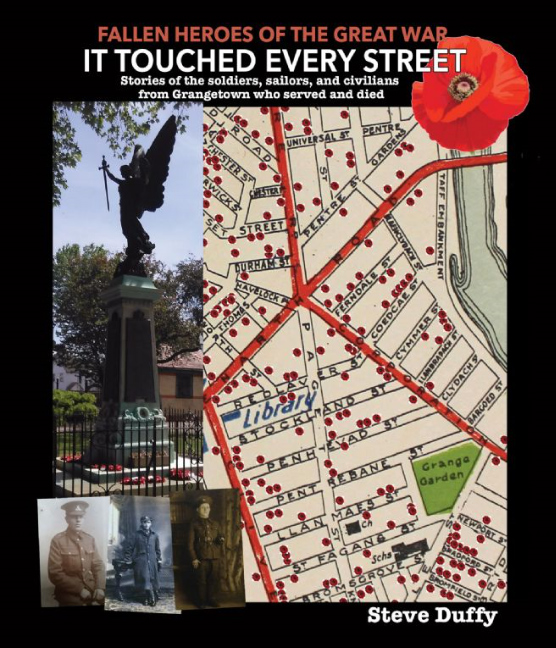
Postcard project remembers the streets where they lived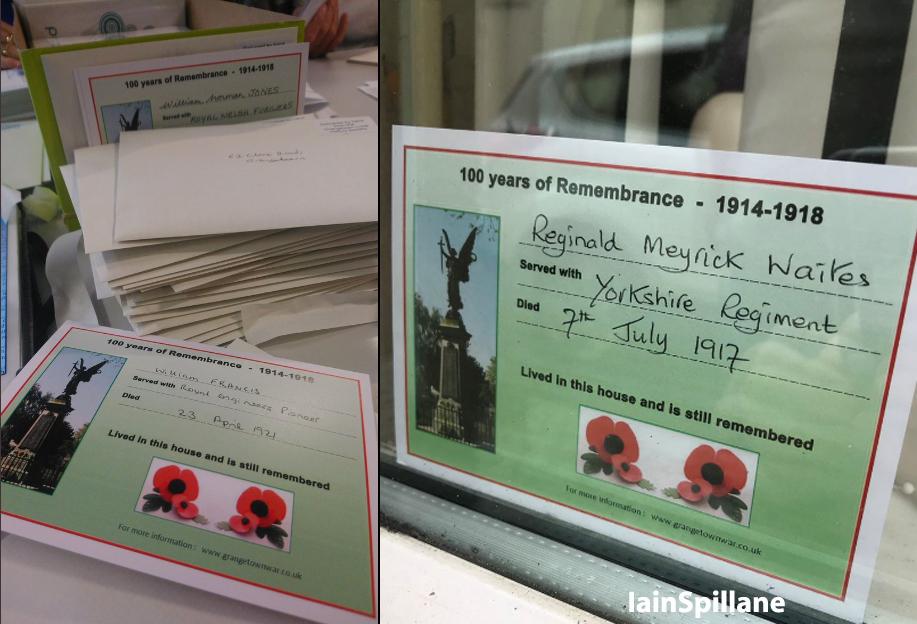

Hugo - whose great-great grandfather from Grangetown died in the war - helps his family deliver postcards.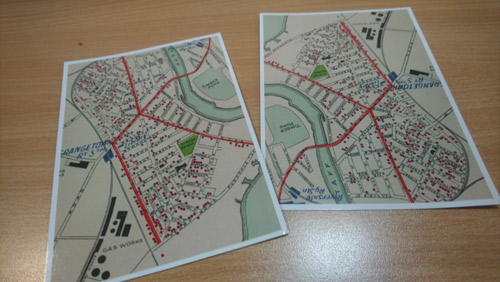
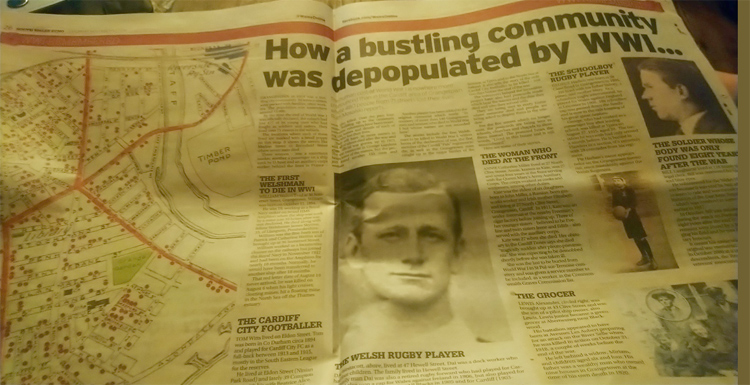
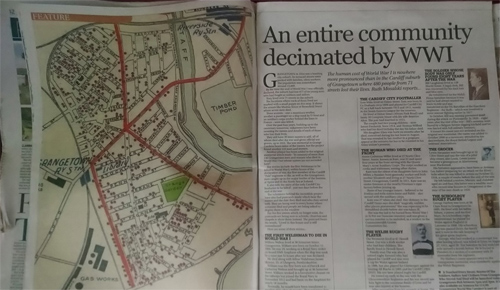
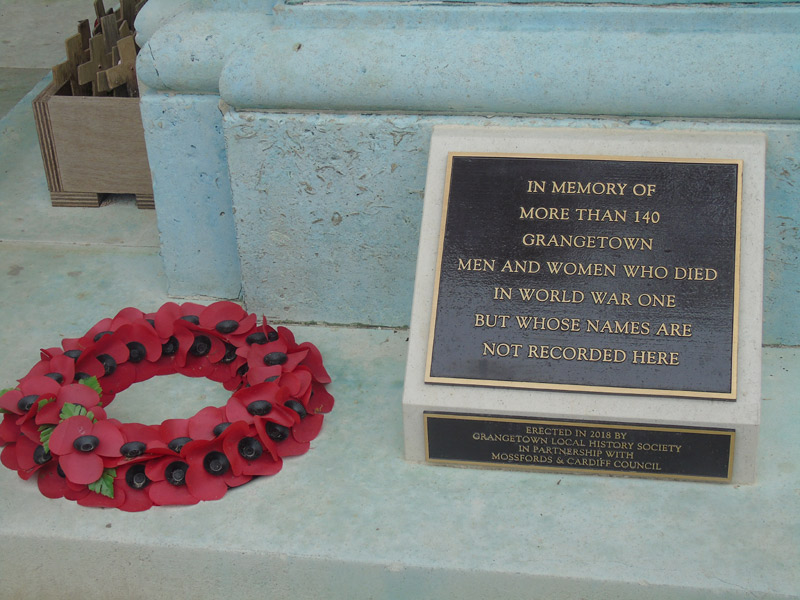
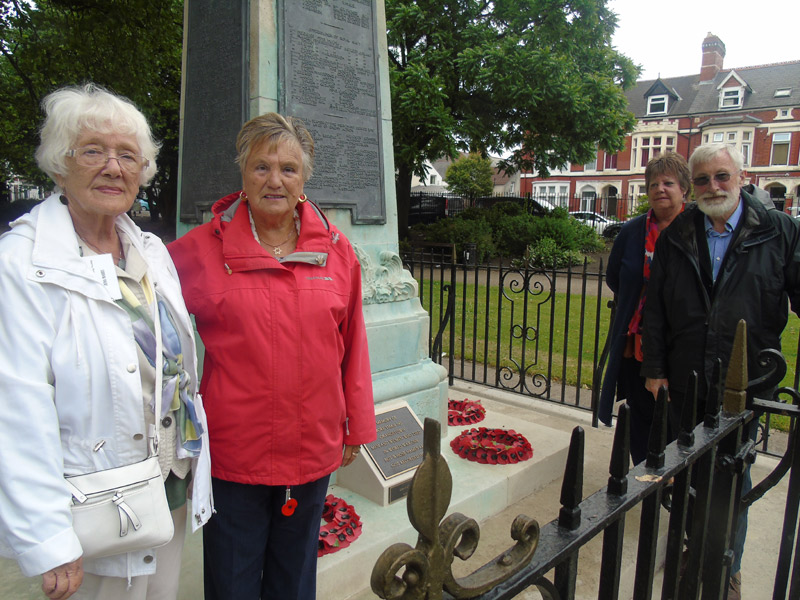
Zena Mabbs, Rita Spinola and Ray Noyes of Grangetown Local History Society
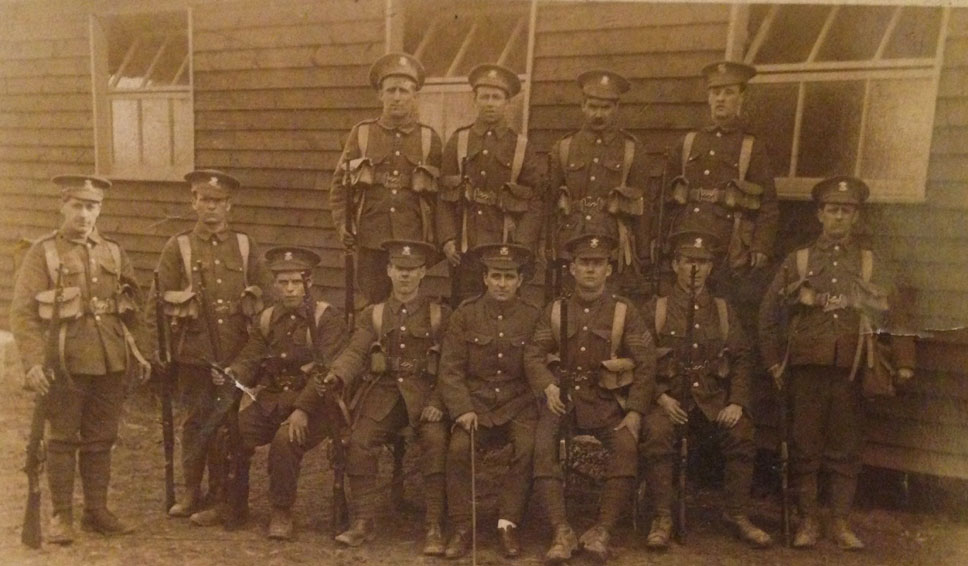
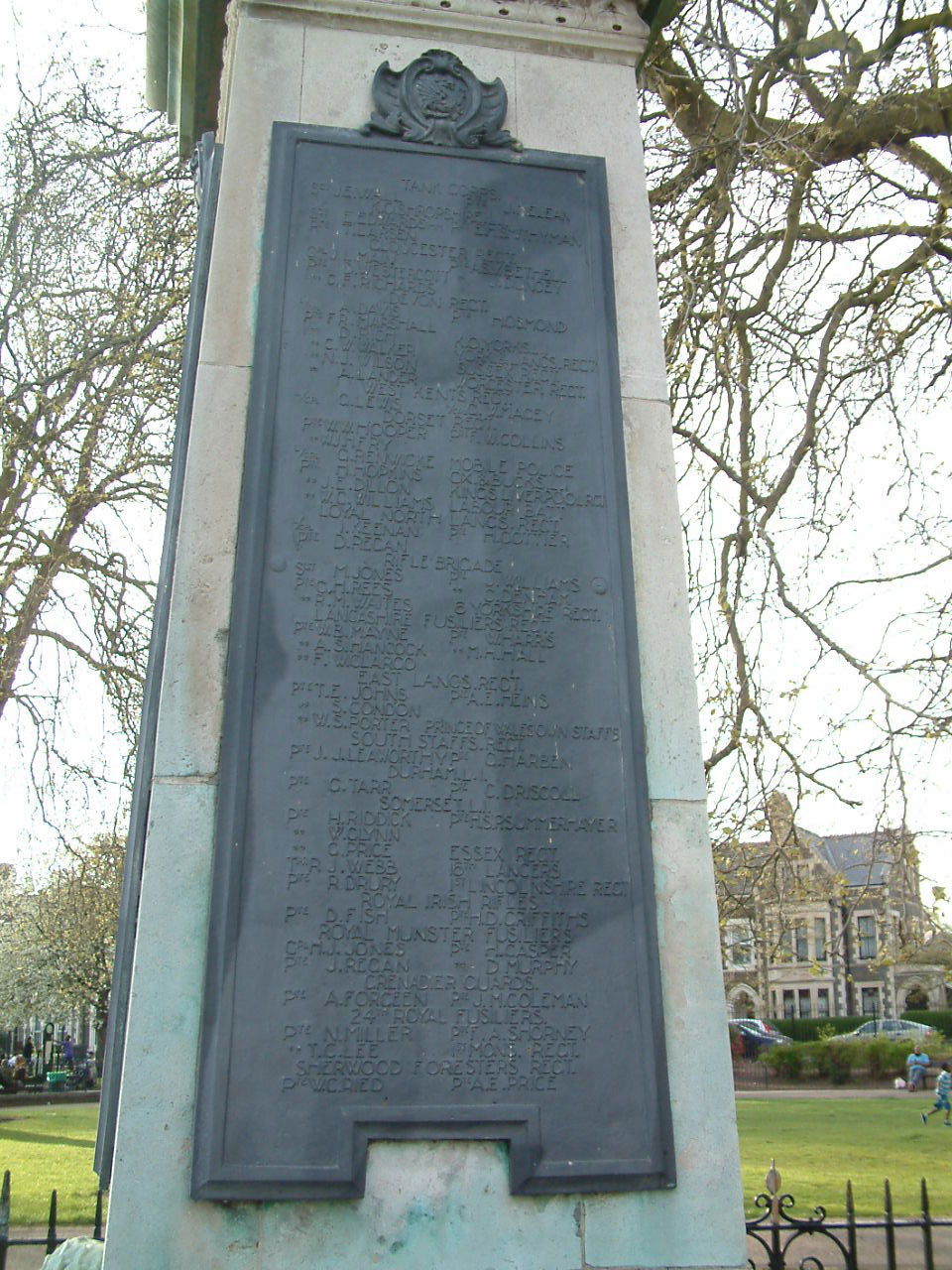
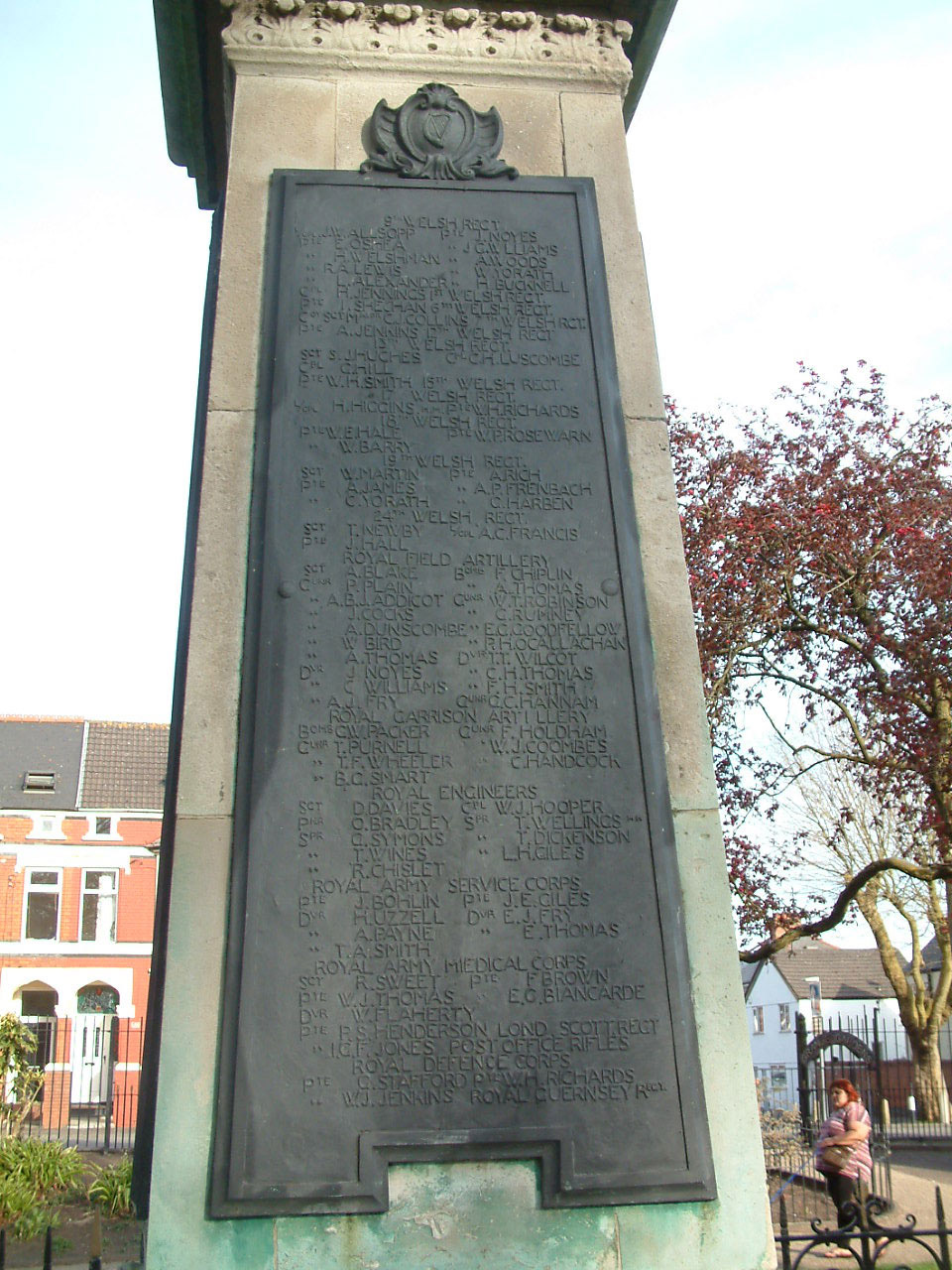
Click on the photos above for larger images to see the names on the Grangetown
war memorial
CAVANAGH J Welsh Regiment TWT Royal Engineers Lieutenant - No
details can be traced
CHIPLEN, Frederick - Grangetown address/connection?
COLEMAN, James Mark Grangetown address/connection?
DE VINE, James Arthur Forrest Grangetown address/connection?
DRURY, Robert b Lincoln but where did he live in Grangetown?
EVANS, D Welsh Regiment 3rd Battalion Private No details can be traced
GULMAN,J Welsh Regiment 2nd Battalion Private No details can be traced
HUGHES, S.J Welsh Regiment 13th Battalion Sergeant No details can be
traced
JONES, W G Royal Welsh Fusiliers Regiment Private Grangetown address/connection?
JONES, William Norman, Royal Welsh Fusiliers 1st Battn Exact Grangetown
address?
LEWIS, John A, South Wales Borderers 5th Battalion Grangetown address/connection?
MURRAY, James, Welsh Regiment 16th Battalion Grangetown address/connection?
O'LEARY,W.J Royal Navy H.M.S "Vivid" Eng Navigator No details traced
O'REILLY, Richard On St Patrick's RC Church plaque, no details traced
OLSEN, T Royal Navy H.M.S "Gosamer" Seaman Is it Trygve OLSEN, born
Norway, living in Seaman's Hospital, Ferry Road in 1911 - a marine stoker,
b 1889?
PAYNE, A Royal Army Service Corps Driver No details can be traced -
possibly Alfred Edward Payne (b 1892, 32 Penhaved St) who may be the same
who joined the RASC as a driver, No 174169, reinlisting in March 1916. -
PRIEST, C Royal Navy H.M.M.S No.7 Stoker No details can be traced - could have been serving on the Q7 ship Penshurst, which was sunk on Dec 25 1917.
REES, David Edmunds CWGC 3031914 Mercantile Marine S.S "Camerata (not
Camelata) from Swansea Second Engineer d 2 May 1917, aged 24 Grangetown
address/connection?
RIDLAND, W.C Machine Gun Corps Private Looks likely to be W Cridland
- not sure of exact Grangetown address but connected to Grangetown family
SAUNDERS,William Welsh Regiment 2nd Battalion Private Exact Grangetown
address needed
SMALLBRIDGE, C Royal Navy H.M.S "Warwick" Private No details traced
SMITH, T A Royal Army Service Corps Driver No details traced
THOMAS, George Edward, Welsh Regiment 11th Battalion Grangetown address/connection?
THOMAS, William J CWGC 607434 Royal Army Medical Corps 2nd (Welsh) Field
Ambulance Private 1477 d 13 Aug 1915, aged 21 at Gallipoli Grangetown
address/connection?
YORATH, W Welsh Regiment 9th Battalion Private No details traced
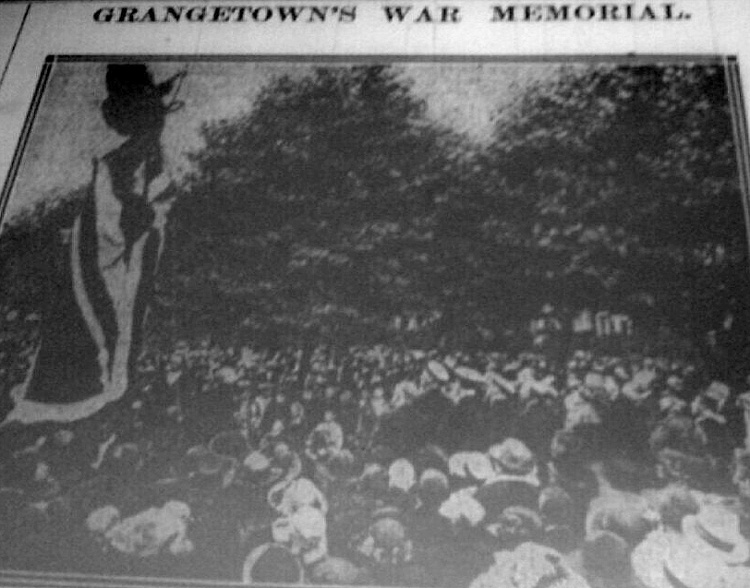
The crowds out for the unveiling of the memorial in July 1921
The Grangetown War Memorial was
dedicated at 3pm on 7th July 1921 - this coincided with the fifth anniversary
of the Battle of Mametz Wood in the Somme, which saw many Welsh casualties. The
memorial was paid for by voluntary subscription and contributions, led by an organising
committee - the Grangetown War Heroes Committee - chaired by Thomas Williams.
It was set up in autumn 1918, before the end of the war, after a public meeting at the Forward Movement mission hall on the corner of Corporation Road and Paget Street. Others on the committee included vice chairman, boilermaker Fred Cornish, baker John Henry Parfitt, Russian-born pawnbroker Morris Hauser, one time greyhound trainer turned hotel worker Robert Hornett, docks worker Thomas Podd and another local baker John Charles Julian (Hon Sec, who died before the unveiling). The dedication
ceremony included music from the Cardiff Naval Brigade and the guest of honour
was MP Sir Hebert Cory. Dr R J Smith said at the opening: "Grangetown gave a greater proportion of men to the war than any other ward in Cardiff." Teachers from Grangetown Council School placed flowers.
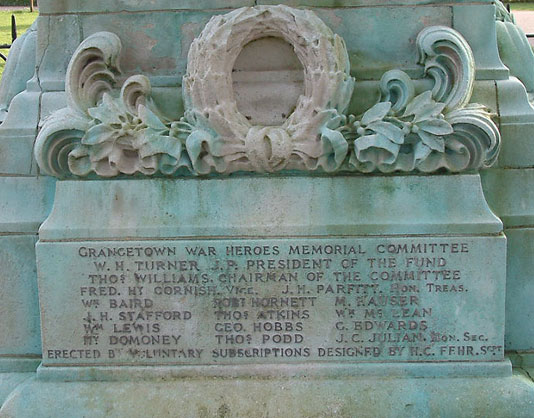
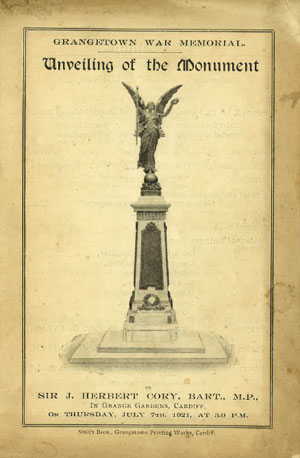
A copy of the programme for the memorial's opening. Click on the image above to look inside. Thanks very much to Ken Poole for sending us a copy of this artefact.
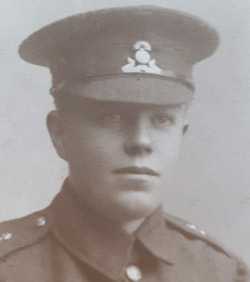
Frederick Clargo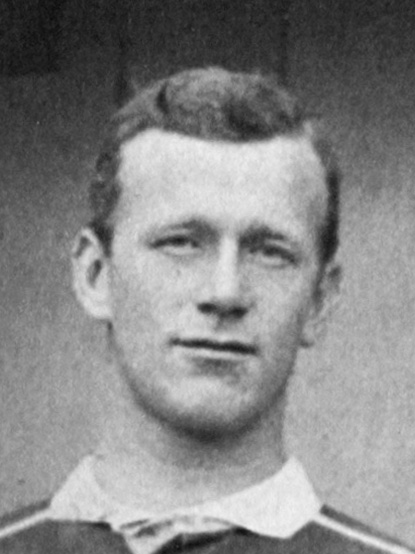 Dai Westacott was a docks worker, with four children, living in Hewell Street. He was also a retired rugby forward (pictured left), who had played for Cardiff and also won a cap for Wales against Ireland in 1905. Despite being a family man, he joined up early in the War with the Gloucestershire Regiment. His war record saw him fight in the notorious Battle of Loos and he was also injured at the Somme. But after recovering from his wounds at home, Dai returned to the front line and in August 2017, was north east of Ypres, when he was killed by shellfire in a support trench, aged 35.
Dai Westacott was a docks worker, with four children, living in Hewell Street. He was also a retired rugby forward (pictured left), who had played for Cardiff and also won a cap for Wales against Ireland in 1905. Despite being a family man, he joined up early in the War with the Gloucestershire Regiment. His war record saw him fight in the notorious Battle of Loos and he was also injured at the Somme. But after recovering from his wounds at home, Dai returned to the front line and in August 2017, was north east of Ypres, when he was killed by shellfire in a support trench, aged 35.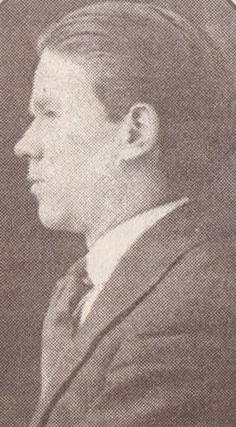 Perhaps the most poignant story is of another Poelcapelle veteran, Bill Laugharne, whose family lived in Maerdy Street.
A legal clerk, he was known as being handsome with thick, dark hair and blue eyes. He had left school early but was an avid reader, who bought a book every week to help improve himself and indulge his love of literature.
Perhaps the most poignant story is of another Poelcapelle veteran, Bill Laugharne, whose family lived in Maerdy Street.
A legal clerk, he was known as being handsome with thick, dark hair and blue eyes. He had left school early but was an avid reader, who bought a book every week to help improve himself and indulge his love of literature.
Roll of honour: The Grangetown men who died at Ypres
August-November 1917:
Sgt Albert Blake, Pte John Caveill
Pte Frederick Clargo, Cpl Albert Cooksley, Pte Henry Cottier, Spr Charles Dickinson
Pte Robert Edwards, Pte David Fish
Pte Bert Forgan, Gnr Harry Fouracre
Driver Ted Fry, Pte Samuel Gatscias
Sgt George Goodwin, Pte Horatio Hancock, Sgt Alfred Harris
Pte Abraham Heins, Pte Arthur Hollyman
Gnr Ivor Ivanissevich
Pte William Jones, Pte William Laugharne
Bmbdr George Packer, Pte James Pring
Pte Thomas Sullivan. Spr George Symonds
Pte Charlie Walker, Pte Dai Westercott
Gnr Thomas Wheeler and 2nd Lt Clifford White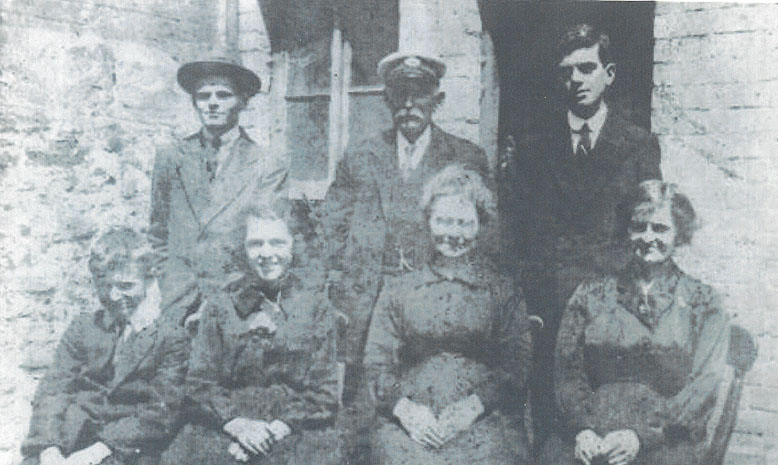
Lewis Jr (back row left) with his father (centre)
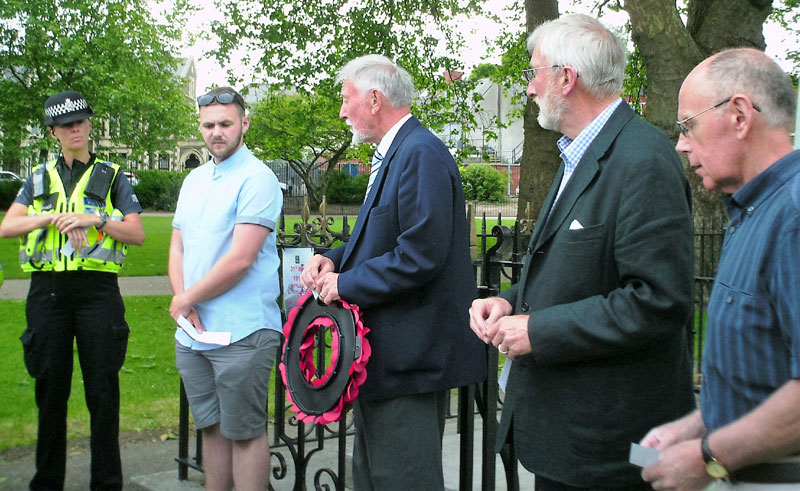
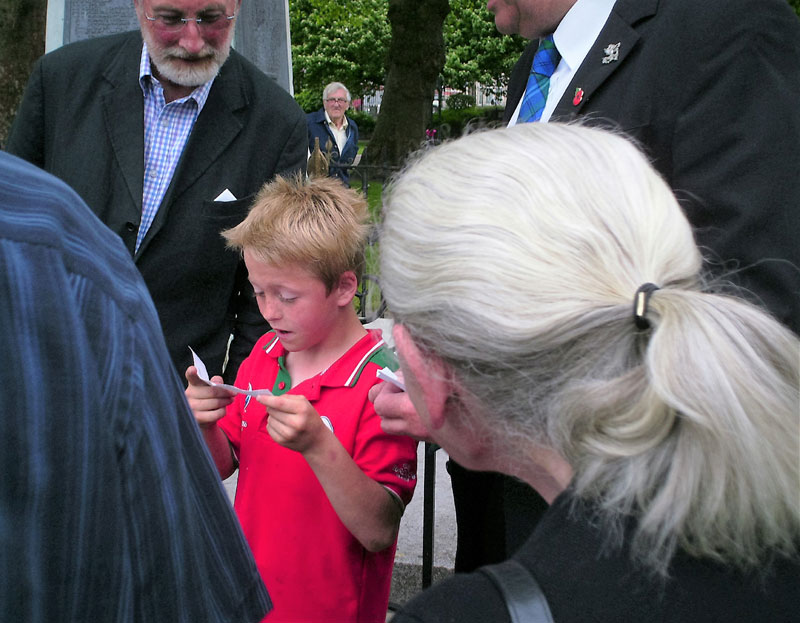
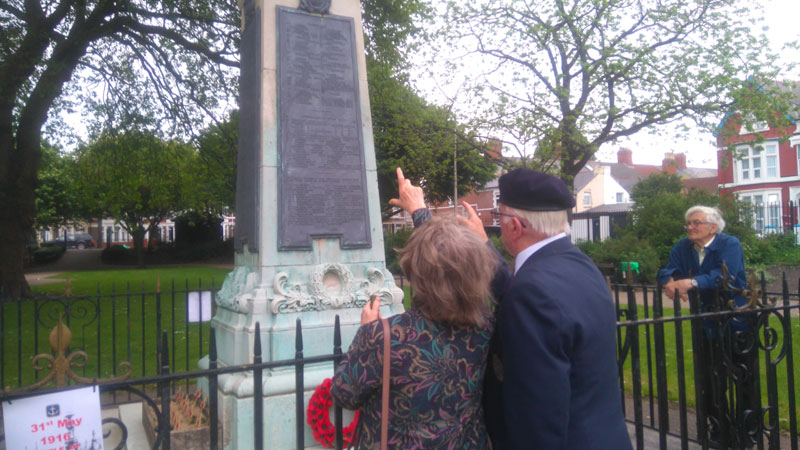
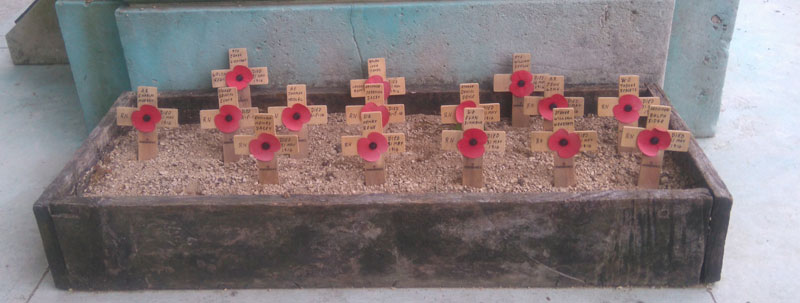
The ships:
HMS Defence - 903 crew died when ship exploded after being hit by German fire.HMS Indefatigable - 1,017 crew lost on the battleship when she sank at Jutland.HMS Queen Mary - 1,266 crewmen were lost, only 20 survived - she was shelled, exploded and sank quickly in the North Sea, off Denmark - the wreck is a protected war grave
HMS Black Prince - all 857 crew died after ship was fired on by a German battleship.
+ Name appears on Grange Gardens memorial

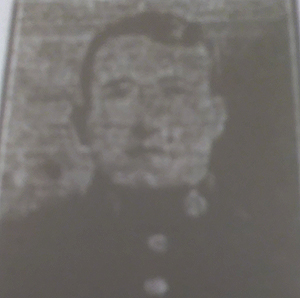 Well, it's now been discovered that he actually survived the war and lived until 1932. No casualty or obvious military record could be found for him - which prompted suspicion - but there are other records which point to his survival.
Well, it's now been discovered that he actually survived the war and lived until 1932. No casualty or obvious military record could be found for him - which prompted suspicion - but there are other records which point to his survival.
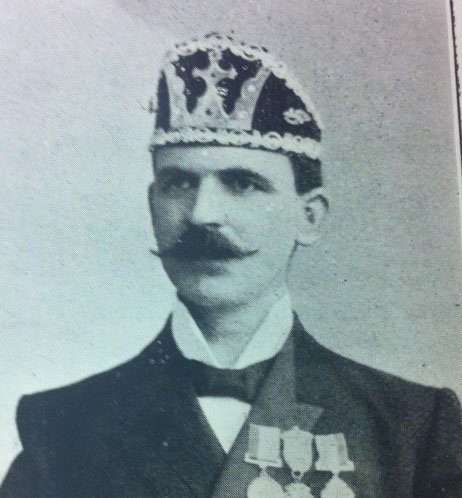
Wrth gogio nosau brad,
Ein calon dd'wed o dan ei chlwy
"Rhaid marw dros ein gwlad."
As we remember the nights of betrayal,
Our heart says in its wounds:
"We must die for our country."
A llawer arwr tlws
On heddyw cwympir dewrion gwlad
Braidd yma wrth fy nrws
Mae llef pob newyddiadur
Yn lleddf gan alar mawr
Mae'r oes yn llawn gofidiau lu:
Dont gyda'r hwyr a'r wawr.
And many a fair hero,
But today the country's brave men
Almost fall here by my door
Every newspaper's cry
Is sad with great grief,
The age is full of numerous woes:
They come with evening and the dawn.
I remember seeing the boys
Marching all together
Their footsteps like thunder
Echoed through the street;
Hooray! Hooray! shouted the children -
Foolish youth is thoughtless;
A mother's heart asked quietly:
"Will my boy come back home?"
With flowers on every side,
What will be on the little mound -
My son's grave over in Flanders?
Oh! I wish I could, like a bird,
cross the rough sea,
I'd be content if I could plant
One flower on his grave.
Gunner E Phillips
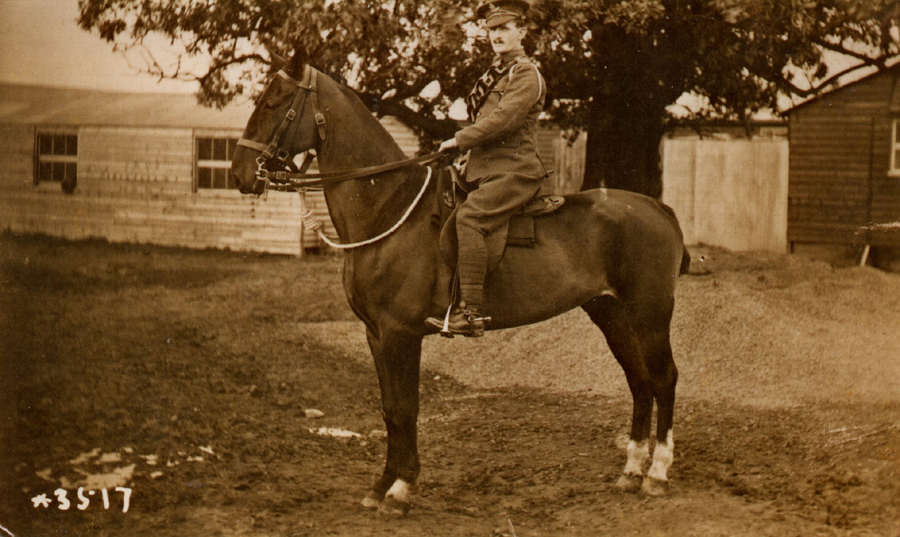
Christmas Williams on his horse
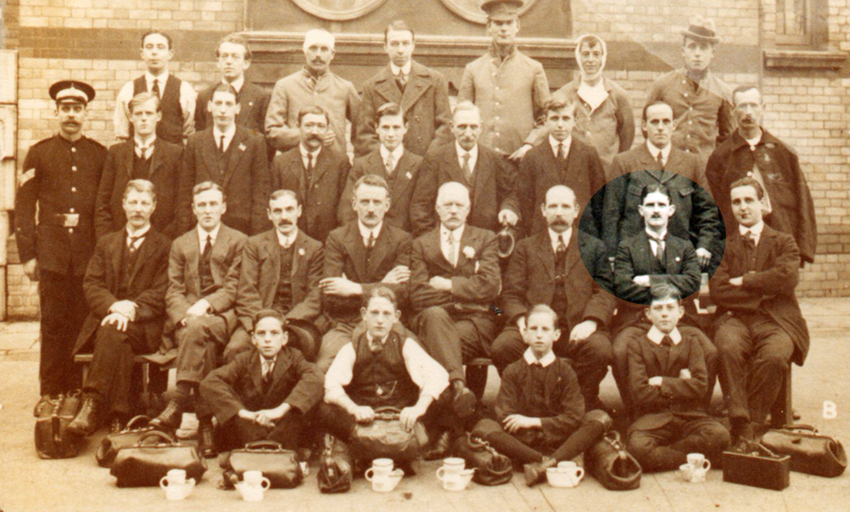
He is circled in this group photo here, with barbers sitting in the front row.
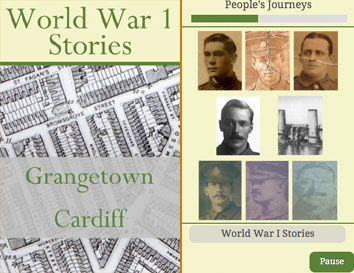 The stories of some of the Grangetown
men who died in World War One can now be heard on a heritage walk app which has
been produced by Cardiff Metropolitan University.
The stories of some of the Grangetown
men who died in World War One can now be heard on a heritage walk app which has
been produced by Cardiff Metropolitan University.
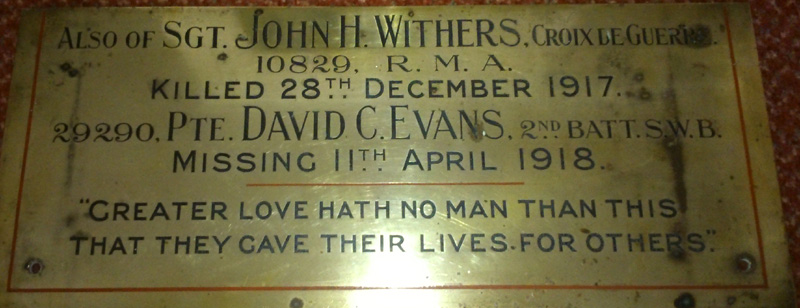
Where did the plaque come from originally?
We're trying to solve the mystery
of a plaque, containing the names of two Grangetown soldiers who died in World
War One.
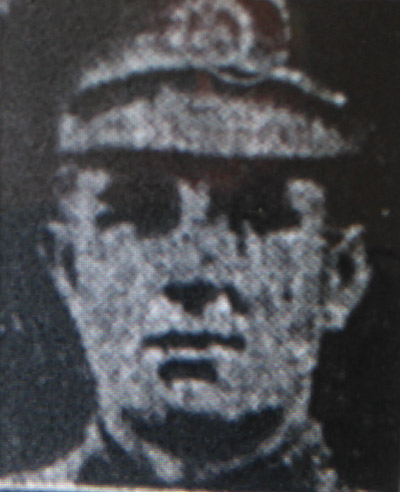
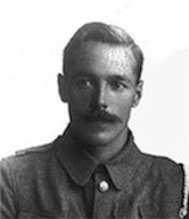
David Evans and John Withers
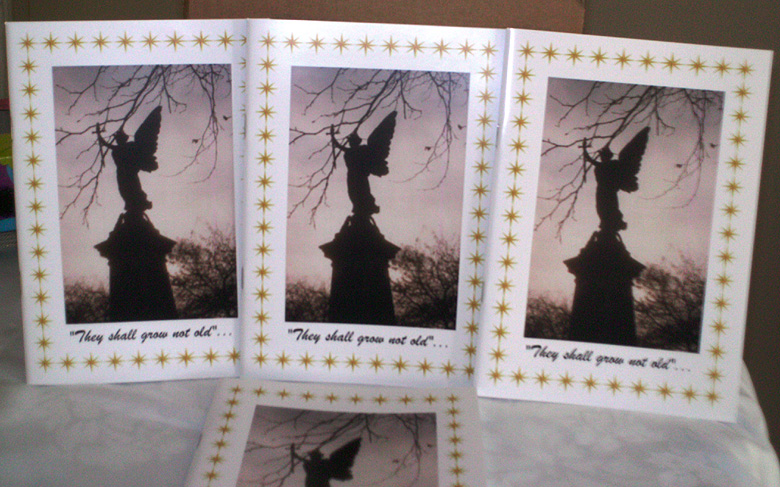
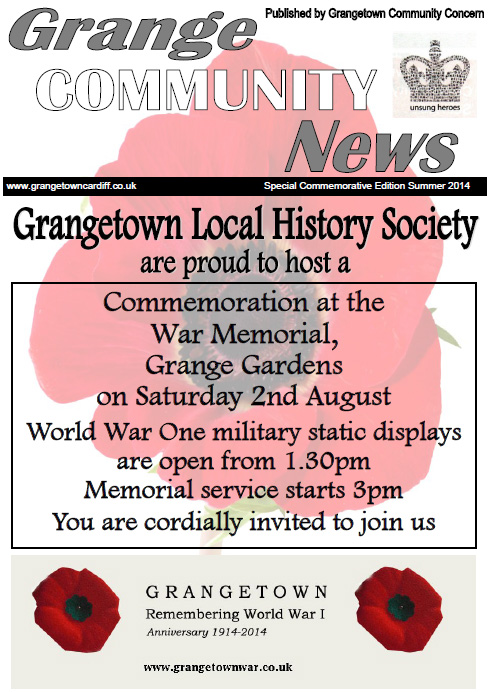
Special booklets have been produced - and also a commemorative edition of Grange News (click to download a PDF copy)
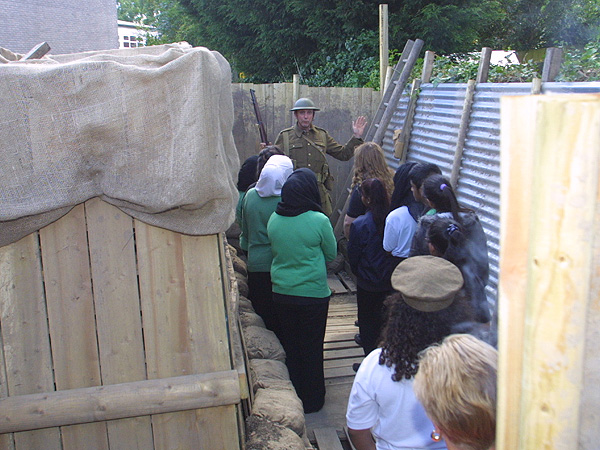
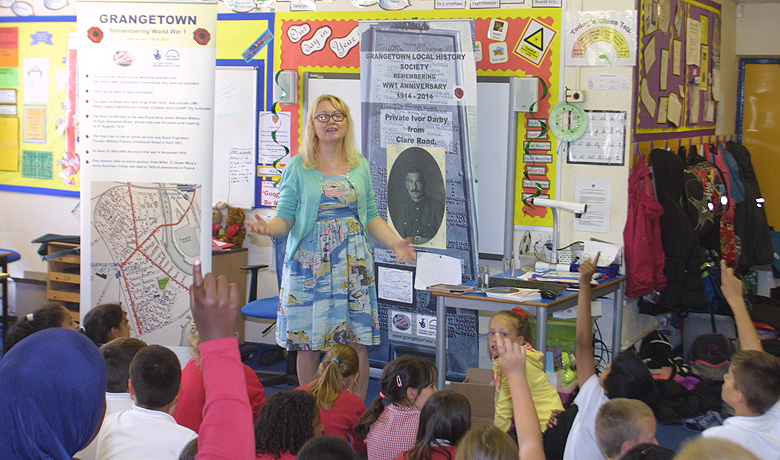

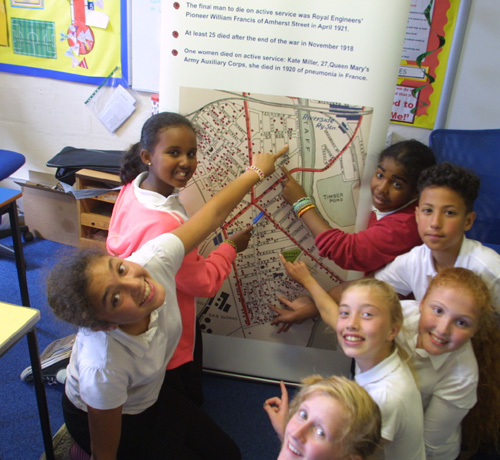
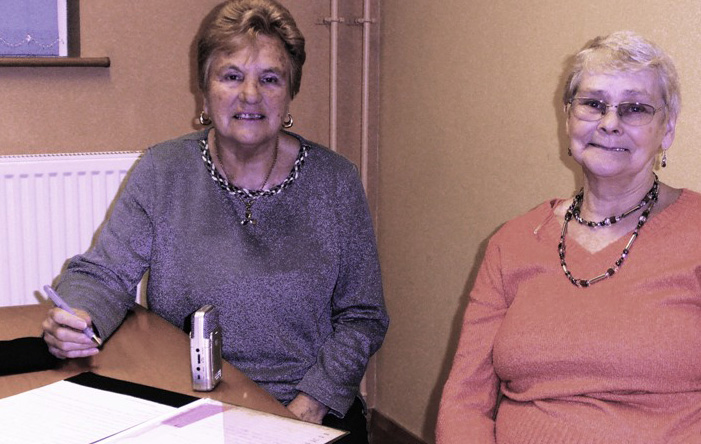
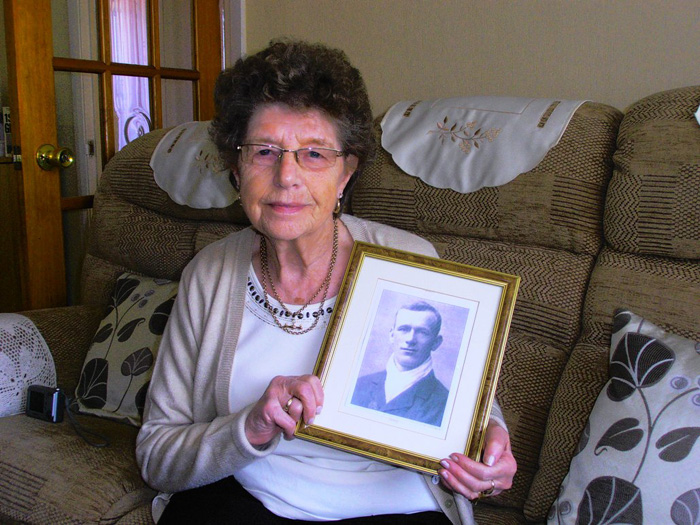
Rita Spinola of Grangetown Local History Society, interviewing Joyce, a descendant
of F.R. Marshall, one of the men on the memorial. Myrtle Hill (right) with a
photograph of her grandfather, David Westacott, who was a Welsh rugby international
- you can read his story here.
We have also started a page of audio interviews with relatives.
Cymru 1914 digital archive
Welsh Voices of the Great War
1914.org
Welsh chapel memorials - geo-map project
BBC World War One
National Museum Wales events
Glamorgan Family History Society WW1 blog
Rhondda Remembers
West Wales Memorial Project
Talking History 1914 blog
The Cardiff Story Museum
War Memorials Online